Here you have a Greek tragedy of a downward spiral in art, culminating in a work being sold by a horse-era institution, propped up by 100 years of destructive philosophy, confirmed shadow games since the 1940s, recent inflationary money printing, and blatant one-sided activism. It’s worth stepping back to see the big picture.
It’s possible that there are deeper aspects to this situation that even those closely involved haven’t considered. This notion of “coming full circle” highlights how what appears to be progressive thought is actually a means to preserve the past and exert control over the present, disguised as an investment in the future. Just as printing money can burden future generations, the era of fiat currency continues to thrive in the art world. The Great Contemporary Art Bubble was an eye-opening discovery for me when I began my career in art back in 2008.
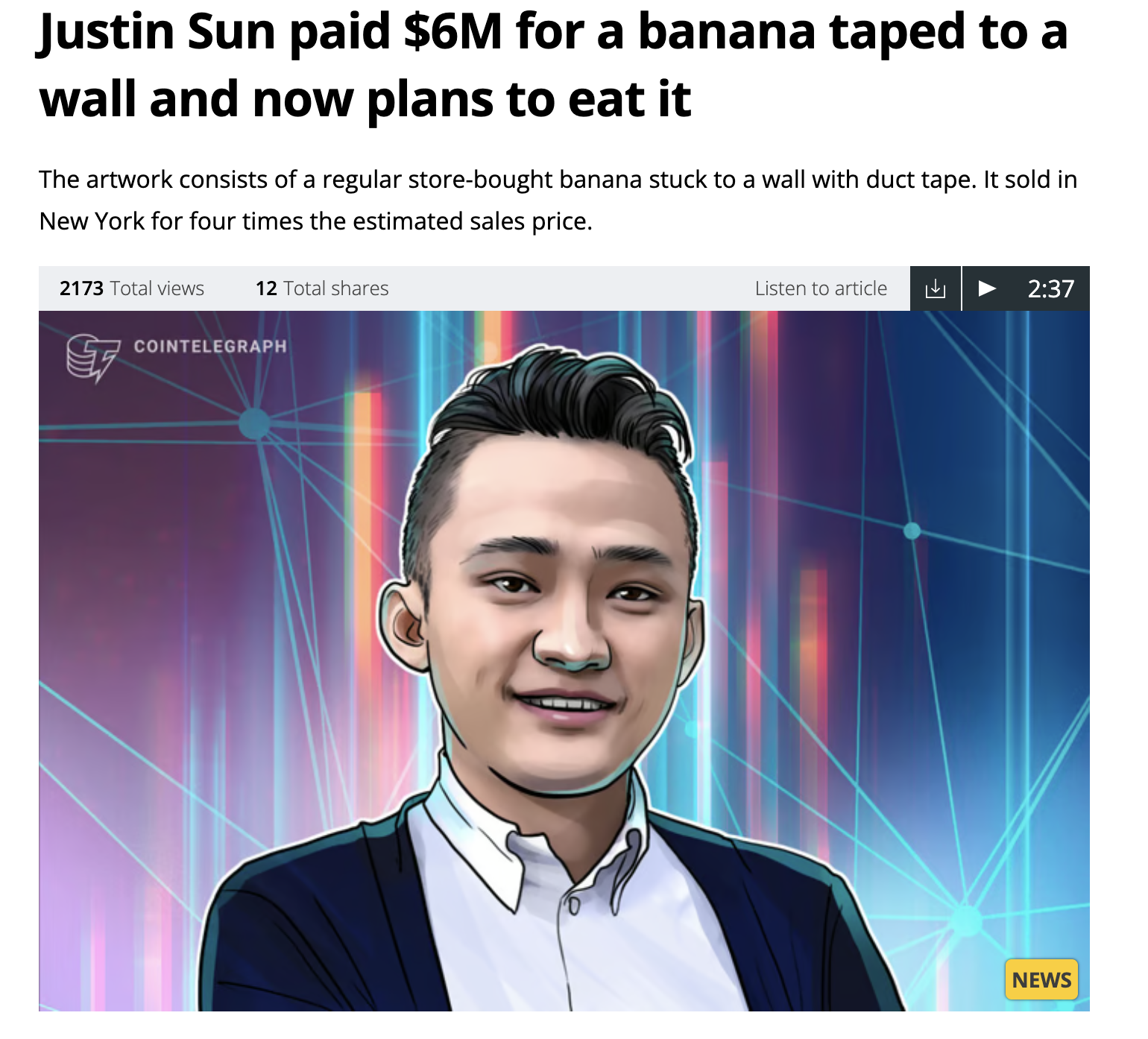
If you’re honest, courageous, and witty, much like Joe Rogan, you might make some errors, but this piece explores aspects of art that many haven’t thought about before, which are often overlooked in traditional art circles. I aim to be as impartial as possible, and I want to help art break free from the agendas of the past century that no longer benefit it, especially since today’s decentralized tools can make art more accessible to those who were previously excluded—essentially everyone on Earth at this moment.
Initially, SuperRare has significantly contributed to the digital art community in numerous artwork sales and advancements within the field, thanks to their DAO, preserving creator resale royalties, and advocating for its recognition among the pioneers of the industry. To gain a comprehensive understanding of their vision, I recommend watching this interview by the founders on Dinis Guarda’s show. The overwhelmingly positive feedback from artists suggests that many appreciate the entire concept. However, there is a concerning trend – it appears that corporate mentality is taking over art once more. This issue extends beyond SuperRare and encompasses the broader company culture in the industry, but it also resonates personally with me.
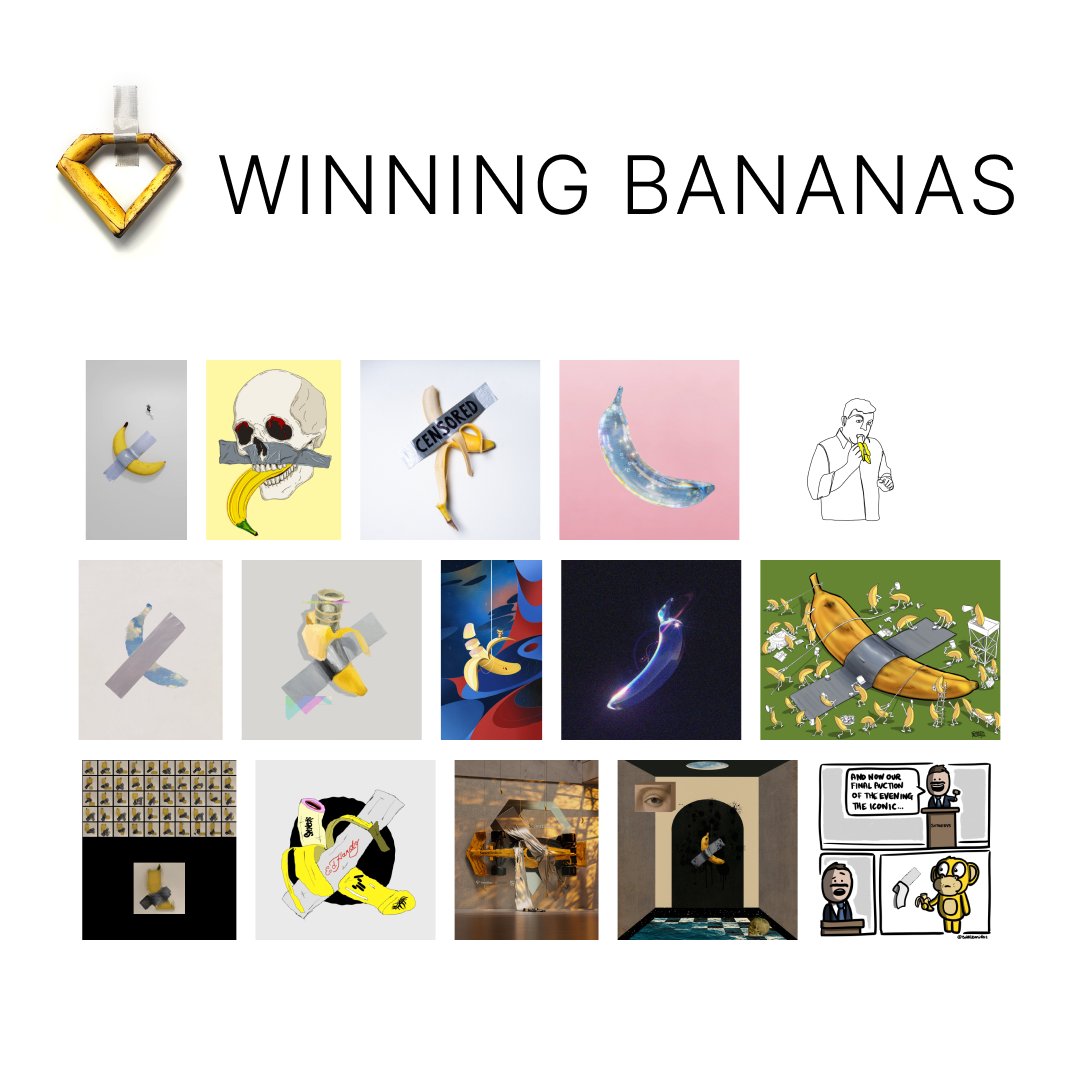 As per the selected fifteen bananas, the dilemma of SuperRare is obvious. You can’t outshine the lame duck pre-internet paradigm banana, and the bureaucratic class, so their curator team is stuck choosing the upper end of what can be politically business wise tolerated. That ends up being not much, while they sell the future down the polluted river.
As per the selected fifteen bananas, the dilemma of SuperRare is obvious. You can’t outshine the lame duck pre-internet paradigm banana, and the bureaucratic class, so their curator team is stuck choosing the upper end of what can be politically business wise tolerated. That ends up being not much, while they sell the future down the polluted river.
A tragedy refers to a type of literary, dramatic, or theatrical piece that usually showcases the decline of a primary character. This decline is often brought about by their personal weaknesses (such as pride, avarice, or ambition) combined with outside factors (like destiny, societal expectations, or actions from others). Tragedies are known for their heavy themes and have a tendency to stir emotions like pity and fear in the audience. The climax of this emotional journey is called catharsis, which can be thought of as a purging or relieving of these intense feelings.
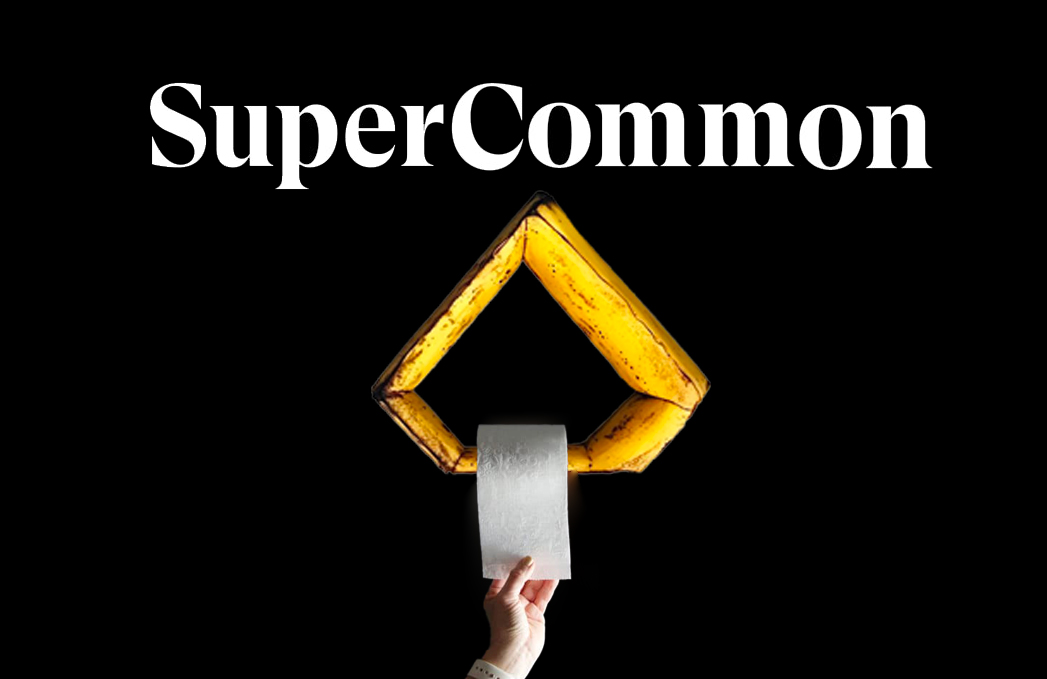
The recent SuperRare competition, coinciding with Sotheby’s auction of a well-known banana, signified a decline in depth within the NFT world, offering much to ponder upon even before its occurrence. This wasn’t due to the quality of art being poor—such standards are unattainable in the realm of NFTs now—but because it catered to an established player while neglecting the original creators, all in the pursuit of audience engagement and financial gains.
The essence of crypto art—the rugged band of true avant-garde artists who took on the central banking system—has now been mostly washed away from sight. Events like this banana show, where they could have shone brightly to the world, instead pushed them further into the shadows. The watering down the Vodka of this scene is now an equivalent of a frozen bottle in the freezer.
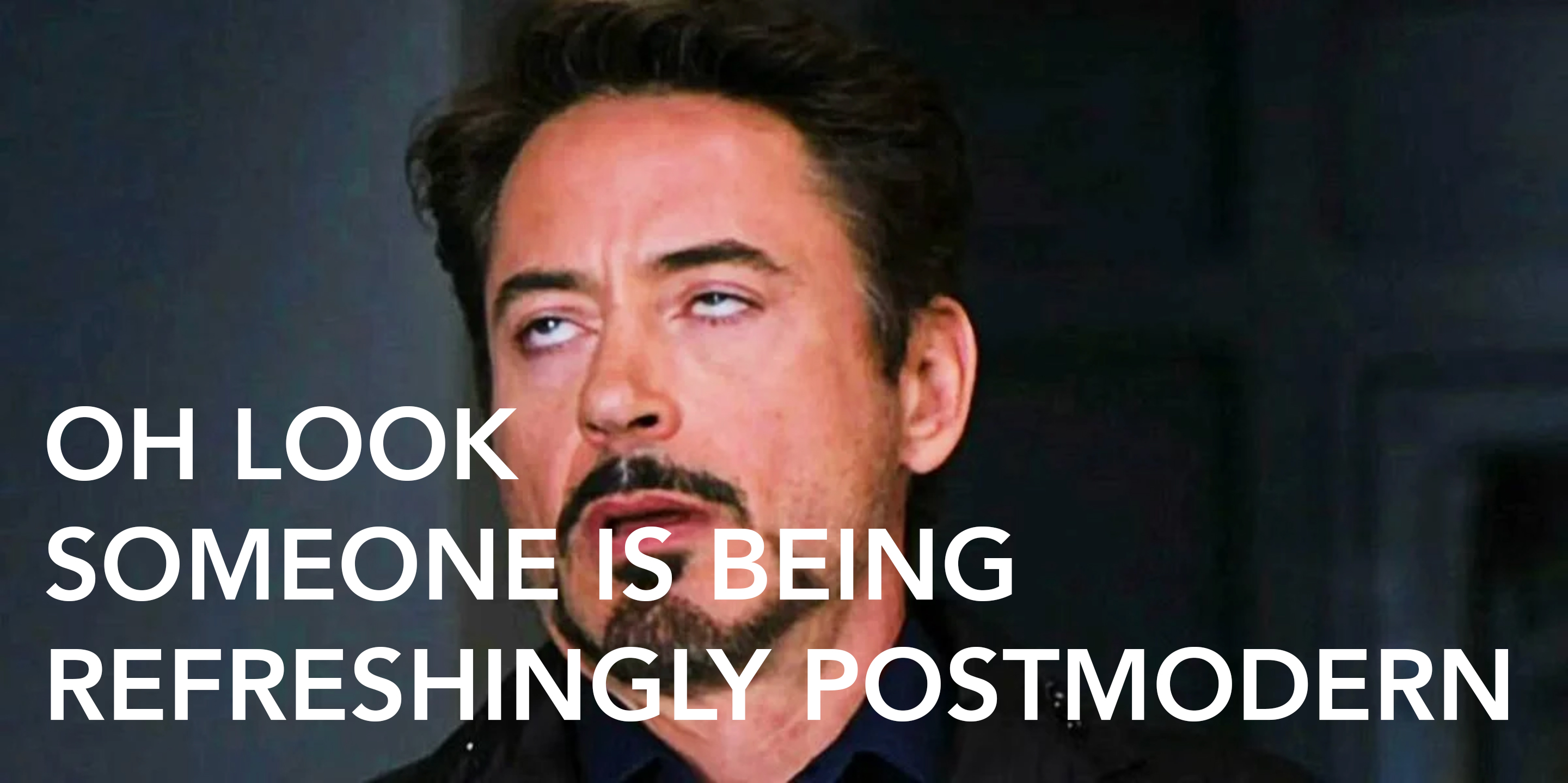
The more partnerships formed with pre-internet and web2 companies in hopes of “reputational gain,” the more a promising beginning started to vanish before our eyes. Very soon, the scene began to resemble the old one the pioneers had been trying to escape. The clearer the communication challenging the status quo in the art world at large, the more certain you became of hearing, “You weren’t selected this time,”, if you heard anything at all in the web3 scene as well. The curatorial team is hidden, so the community can only fight a symbol like SR, while those responsible for the heat generated remain protected.

I’m sorry for any confusion, but right now, I’m not my usual self, if you catch my drift.
If art is completely unfettered, who are the visual artists who hold similar influential roles to those of Jordan Peterson, Thomas Sowell, Eric & Bret Weinstein, Gad Saad, Camille Paglia, Joe Rogan, Jonathan Haidt, Graham Hancock, Patrick Bet-David, Coleman Hughes, Yeonmi Park, Casey & Calley Means, Christina Hoff Sommers, Michael Malice, Mike Baker, Matt Taibbi (these two are repeated by mistake), Matt Walsh, Tucker Carlson, Annie Jacobsen, Ben Shapiro, Candace Owens, Andrew Huberman, Ayaan Hirsi Ali, and many others in the realms of philosophy, politics, science, or media?
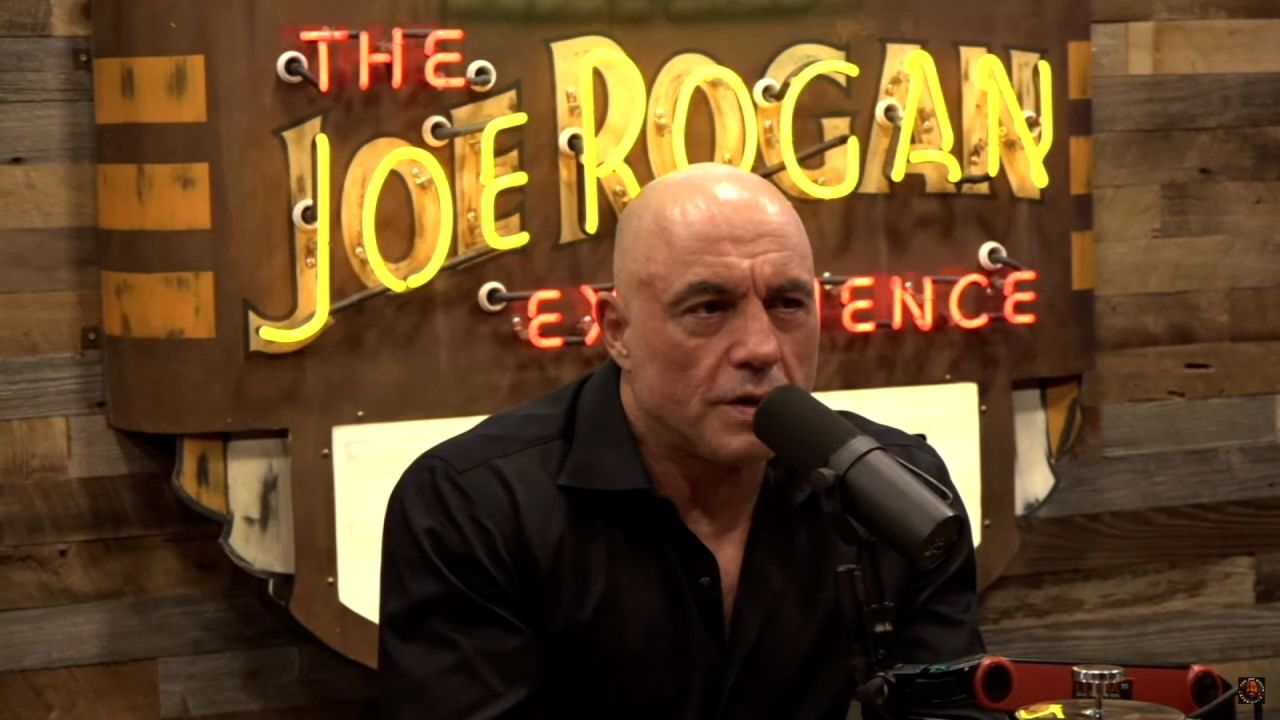 This list includes credentialed academics, surgeons, scientists, religious and non-religious figures, journalists, people from the left and the right, as well as outside the system. Regardless of what you think of them, together they reach billions of people across various platforms and tackle a vast ocean of topics that are absent from the art world. Many even more provocative voices are deliberately excluded from the list, highlighting just how low the tolerance for dissenting to the postmodern monolith viewpoints is.
This list includes credentialed academics, surgeons, scientists, religious and non-religious figures, journalists, people from the left and the right, as well as outside the system. Regardless of what you think of them, together they reach billions of people across various platforms and tackle a vast ocean of topics that are absent from the art world. Many even more provocative voices are deliberately excluded from the list, highlighting just how low the tolerance for dissenting to the postmodern monolith viewpoints is.
Is it possible we’re uncovering the extent to which art has been controlled throughout history rather than living in an especially restrictive period? As time goes on, it seems that the ease of creating and disseminating art has overshadowed its original intent, mirroring similar developments in food, medicine, media, and other areas as suggested by the guest list from the podcast. It appears that web3 is following suit in this regard.
This piece could potentially shift your entire understanding of contemporary art. To grasp its essence, you’ll require a dose of courage and honesty.
In my recent conversations, such as the interview with Anna Fischer, I’ve brought up the topic that the practices of acceptance and rejection in the art world are significantly connected with obscure histories and questionable motives. This encompasses the influence of intelligence agencies like the CIA since the 1940s, often working in tandem with a specific type of ideological control—a factor that might make art more confined than even today’s corporate world in terms of ideas. It’s been so embedded in our culture for such a long time that many people fail to recognize being dominated by the single-minded philosophy of postmodernism. If you’re not familiar with this perspective, I encourage you to read my previous article titled “Free web3” for more insight.
By unveiling declassified records, investigative journalism, and biographies concerning the Congress for Cultural Freedom (CCF), it was exposed that this organization, secretly financed by the CIA, sponsored artists such as Jackson Pollock, Rothko, and De Kooning. The Museum of Modern Art (MoMA) significantly contributed to the CIA’s cultural strategy. Notable figures like Nelson Rockefeller (a MoMA trustee) were implicated in promoting Abstract Expressionism as a symbol of American liberty. MoMA orchestrated exhibitions that received covert funding from CIA-affiliated organizations, thereby ensuring that Abstract Expressionism gained global recognition to counter Soviet art propaganda.
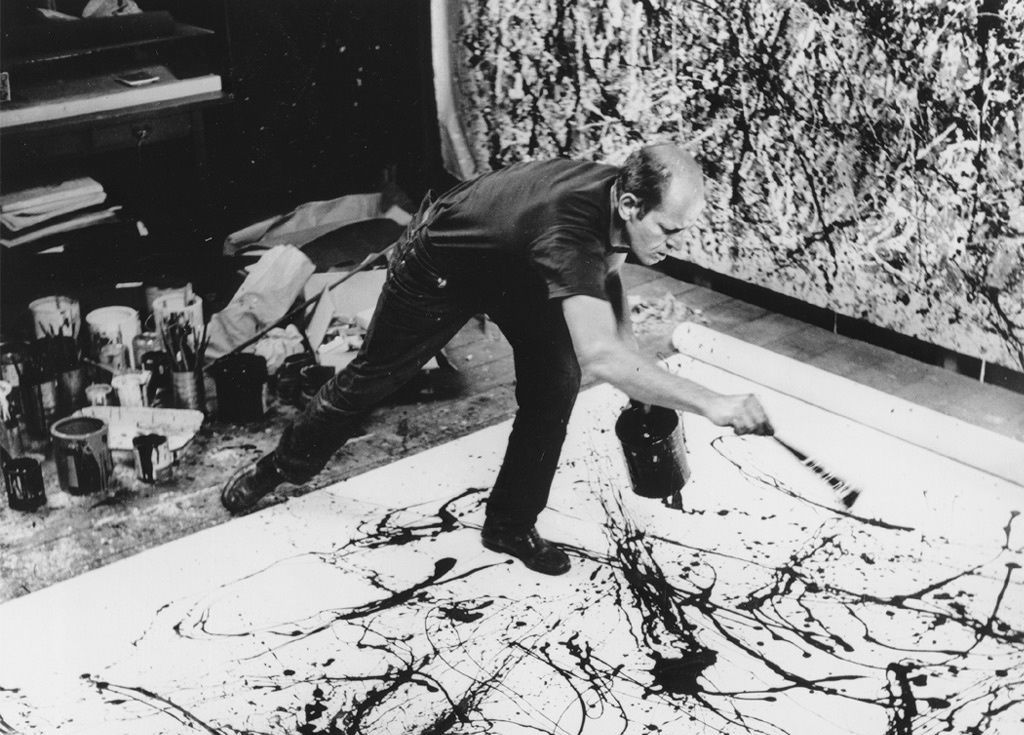
Jackson Pollock in his studio in 1951
Let me clarify, VESA—are you implying that SuperRare or Sotheby’s might be indirectly impacted by an intelligence agency? While I don’t have any direct evidence suggesting this, it is also difficult to rule out the possibility of indirect influence considering what we know about past operations. Modern intelligence agencies tend to work covertly, often leaving no visible traces of their involvement.
Regardless of whether it’s beneficial or detrimental, these forces have indisputably shaped our journey. The matter at hand is: Did the CIA cease its activities in space after the 1950s, which seems improbable, and how many other organizations, from what countries, have joined since then? It’s clear that this is a significant aspect of our current state, and I’ll do my best to explain it further in the following sections.
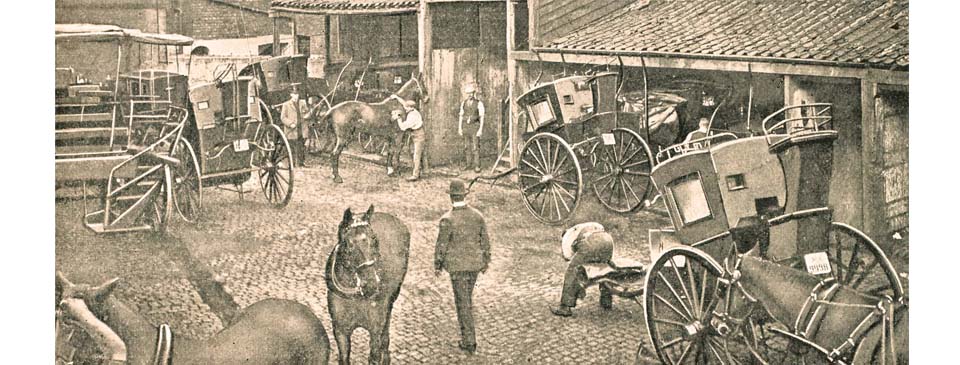
Sotheby’s, established in 1744, has historically been associated with prestige and quality, much like the press. However, during COVID-19, they experienced a surprising evolution, diving into the digital realm of metaverses and non-fungible tokens (NFTs). This shift was akin to a high-end art gallery deciding to sell fast food artworks, but finding it trendy. To me, it seemed like they were intentionally destroying their own reputation for progress. A similar evolution occurred with SuperRare, which distanced itself from its roots, discarding artists like Robness and Max Osiris, who were considered originals or OGs by many. While these artists were certainly contrarians, they have always played a significant role in the art world. They championed freedom of expression, even if it was annoying to some founders. However, their impact was powerful, embodying the essence of what this scene was intended to represent. In truth, they weren’t doing anything that artists like Duchamp, Pollock, or Basquiat wouldn’t have done. Despite a few heated arguments with Max myself, I stand by his side.
Artistic individuals often prioritize their creative pursuits above corporate agendas. I was respectful towards those early in the scene, but unsparing in my portrayal of its true nature. Works such as “Selling banks their own backsides” and “The Brave” reflect this. Corporations were tense just knowing I existed, particularly after advocating for free speech during the Covid pandemic. Many web3 platforms rejected my applications, so props to SuperRare for standing by me. I promised to be fair, but even just defending free speech has cost me tens of millions so far.
Freedom to express ideas or creativity can also be referred to as freedom of speech or art. However, the artists with the greatest talent and most unique expressions often find themselves marginalized, while replicas of established masterpieces, outdated concepts, meaningless digital art, and various forms of abstract impressionism continue to flourish. I too had some innovative pieces, but they received little attention. It appears that everyone except me has managed to get their work showcased in Sotheby’s and Christie’s.
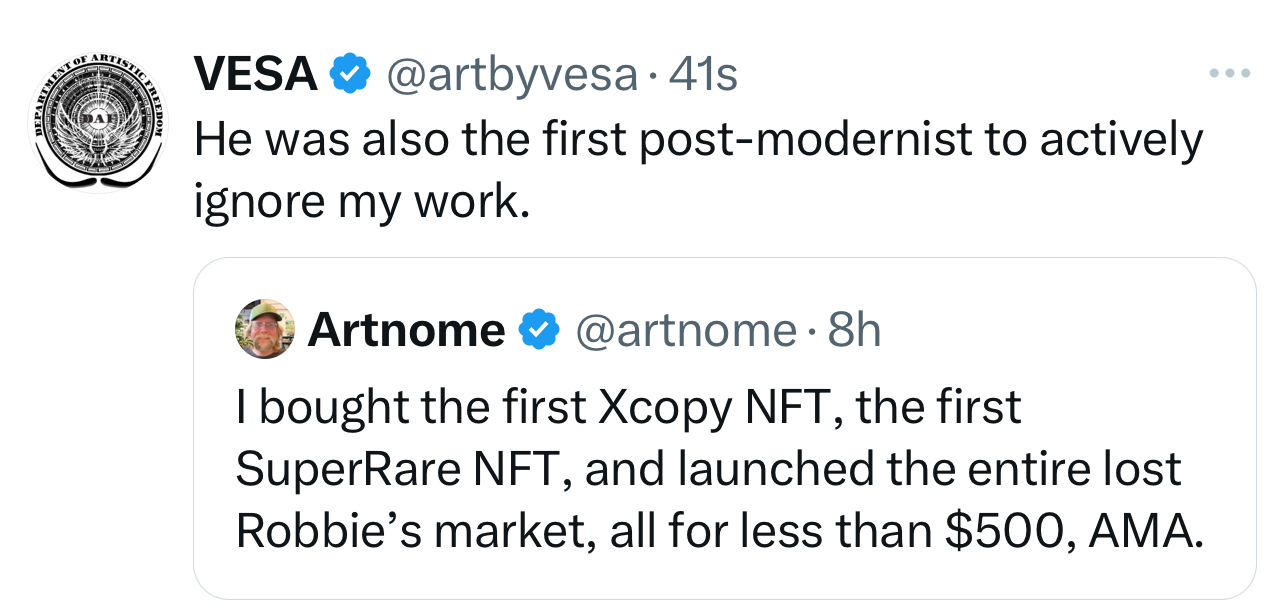 To share some of the load, this was going on for me ever since the beginning. Artnome was among the first three people I contacted in 2017, and he took an active role in making sure I was nowhere to be found in his curation or circle. I contacted him directly, so there is little doubt. Everyone in the early scene was aware of everyone else. Can only imagine what kind of things he has said behind closed DMs. To me, Artnome represents crypto art much like Flint Dibble represents archeology. Many from the early scene felt the same. Not mentioning names as I am not in the habit of throwing people under a bus, nor were they shy to say so either.
To share some of the load, this was going on for me ever since the beginning. Artnome was among the first three people I contacted in 2017, and he took an active role in making sure I was nowhere to be found in his curation or circle. I contacted him directly, so there is little doubt. Everyone in the early scene was aware of everyone else. Can only imagine what kind of things he has said behind closed DMs. To me, Artnome represents crypto art much like Flint Dibble represents archeology. Many from the early scene felt the same. Not mentioning names as I am not in the habit of throwing people under a bus, nor were they shy to say so either.
In 2017, when there were only a handful of crypto artists around, it was the SuperRare team who invited me to join their platform. Unfortunately, I made a wrong decision at that time by joining Four Park and Orion Vault instead. My decade-long works could have been valued at $50K in those platforms, whereas SuperRare was selling pieces for an average of $50 during 2017 and 2018. The creation process behind my works required a considerable amount of effort, making them worth five times less than what I could have earned on SuperRare. To be clear, I’m not referring to the high-quality artworks like Xcopy or A.L Grego but rather amateurish pieces that resembled kids randomly throwing paint at a wall and hoping something interesting would emerge with a glitch effect.
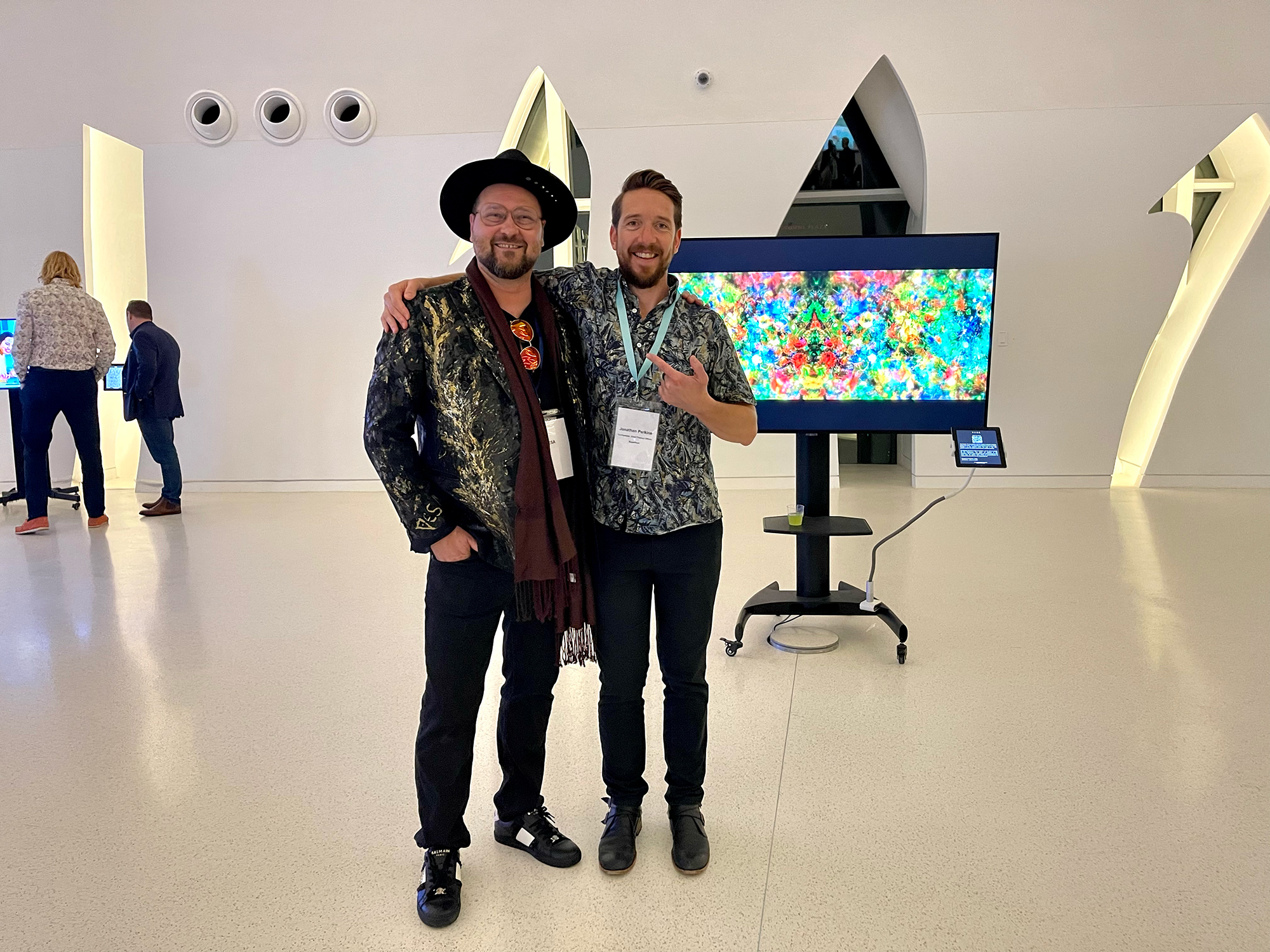
VESA and CTO of SuperRare Jonathan Perkins at the Museum of the Future in Dubai in 2022.
I apologize for any confusion, but

Others were consistently selling their works for exorbitant prices during the 2021 NFT boom, but it seemed that I, despite being among the earliest and most visible participants, wasn’t able to reap similar benefits in the NFT marketplace.
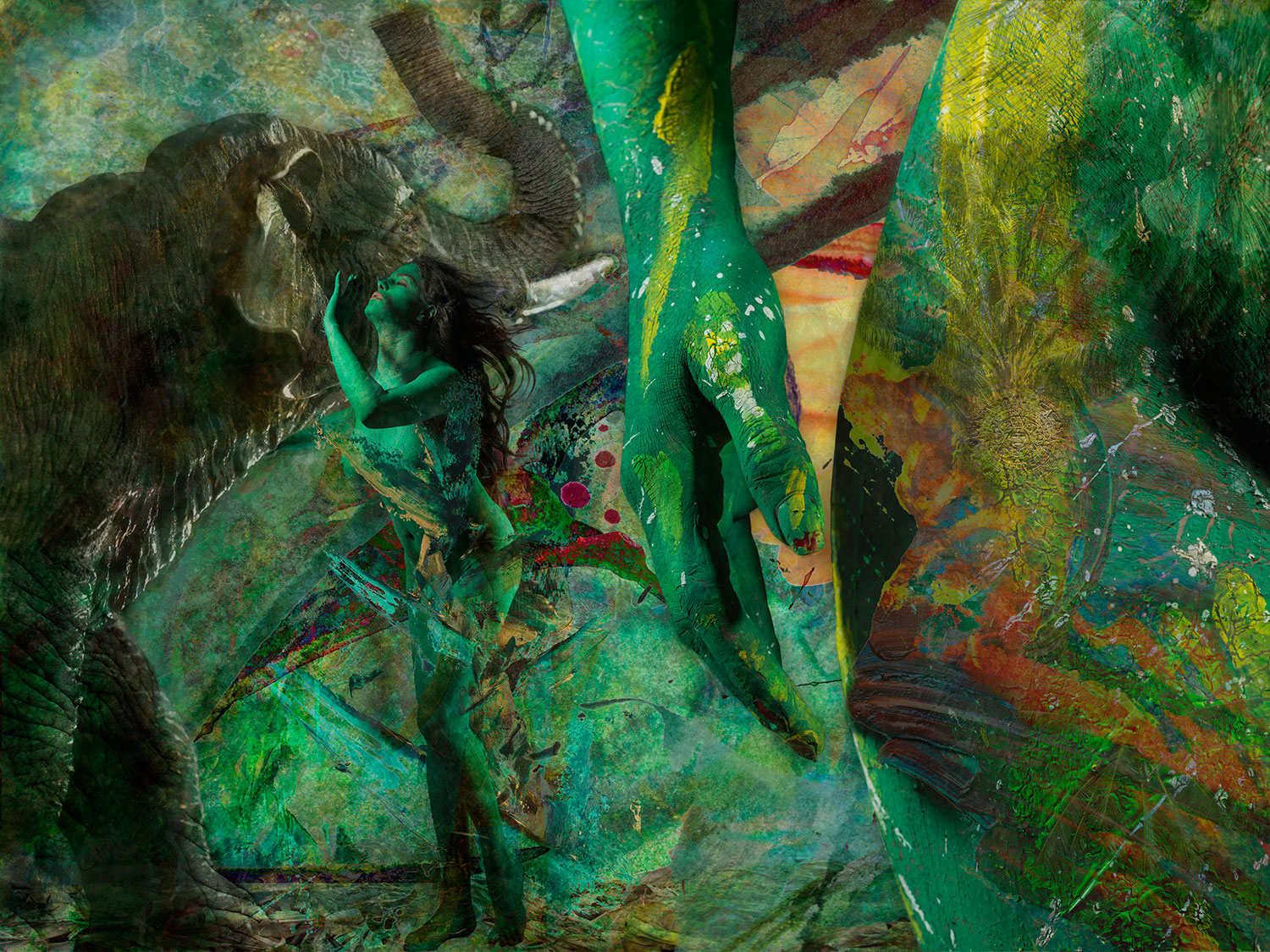
As a forward-thinking crypto enthusiast, I find myself captivated by the groundbreaking artwork titled “The Beginning of a New Era,” created by VESA in 2013. This digital masterpiece was brought to life with the collaboration of a Bollywood luminary, reaching an astonishing audience of approximately 300 million individuals when it was unveiled.

As a researcher delving into the realm of digital art, I’ve come to realize that SuperRare swiftly established itself as a go-to platform for collectors, many of whom, truth be told, were novices in the world of fine art. The visionaries behind this project hailed from the fields of architecture and new media, lacking firsthand experience in traditional art. It was a landscape that thrived on cryptocurrency symbols and advocacy for decentralization, which eventually morphed into unbridled speculation about anything and everything offered.
Generally speaking, many collectors prioritized acquiring works that carried a prestigious label over pieces that reflected the artist’s career, content, or artistic depth. Nevertheless, there were exceptions – artists whose work showcased genuine talent in these areas. On the other hand, digital marketplaces like Rarible, OpenSea, and others morphed into something akin to the wild west of the digital age, ablaze with activity.
I’m employing Joseph Desire-Court’s 1826 “Delusion scene” artwork in a humorous and personal way to illustrate my journey with SuperRare, from its early days up until now. This artwork holds great significance to me because it was during this period that I lost my real son, who was stillborn, which left me feeling excluded from the movement in 2021. The pain of losing my son coincided with my first experience with NFTs, and while I’m not placing blame on SuperRare for this situation, it does seem to have played a role in my decline—a fact that they were aware of. During the upcoming “banana show” segment, I received confirmation of their awareness, as all the founders were tagged in my post, and the accompanying text leaves no room for doubt among the curators.
It’s proof of censorship.
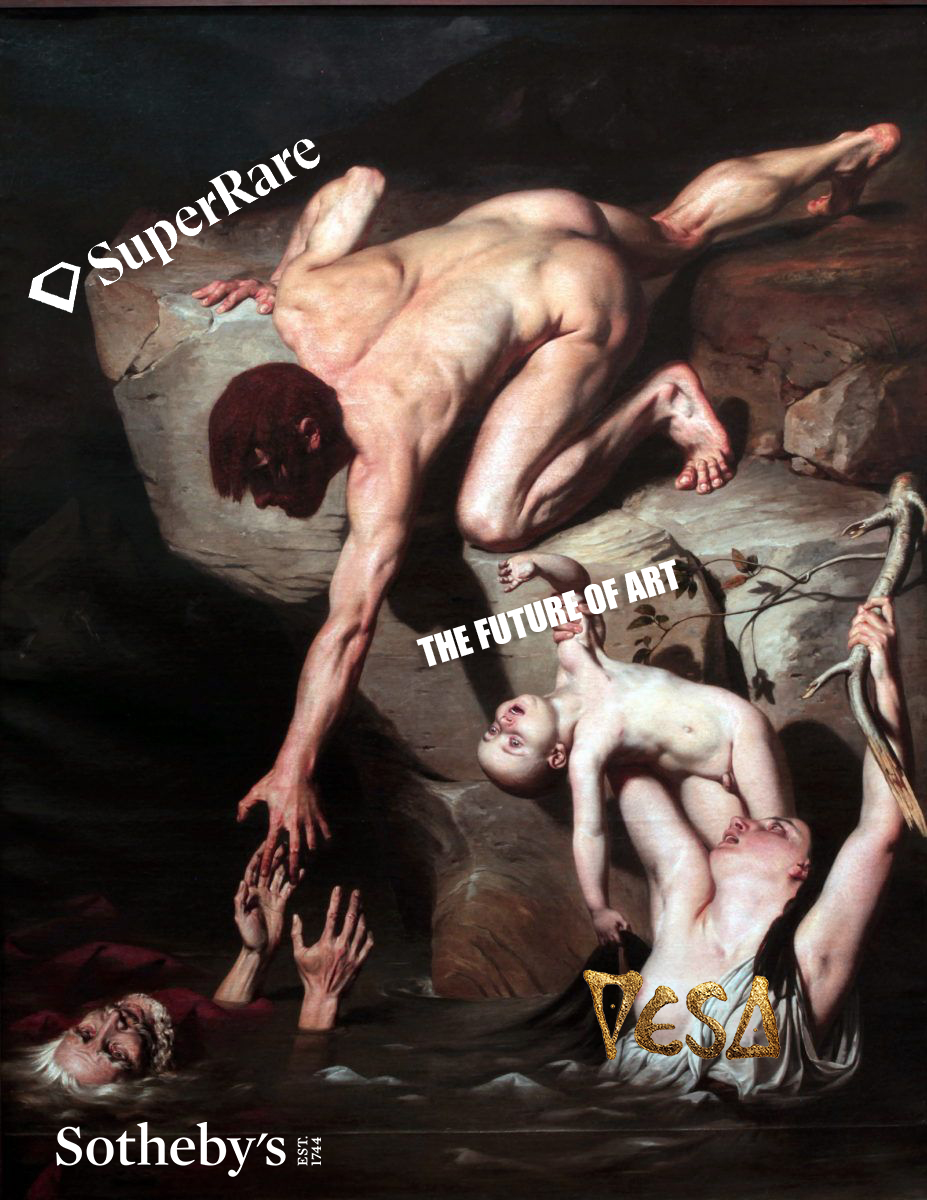
In the biblical tale from Genesis, God brought a flood upon the earth, preserving only Noah and his kin. All others met their end in this great flood. Rather than depicting the life of Noah, Court presents a vignette from the opposite perspective. Here, a man faces a difficult decision: saving his son or his father. He elects to save his father, but even with his best efforts, the father slips away. This painting can be interpreted as a metaphor for clinging to the past. If you persistently hold on to traditions and the past, you might miss out on the endless opportunities that the future has to offer.
Amidst the surge of the NFT market, the Pride LGBTQ+ movement saw an unprecedented rise, catapulting Fewocious into stardom almost instantly. As someone who appreciates art, I acknowledge his talent, but at 16, he’s still in the early stages of artistic development. His works often portrayed emotional, misunderstood characters, which, if you catch my drift, were reminiscent of a turbulent adolescence.
 It was all WAGMI and “Gm” for the scene—except, of course, for many of the artists who had fled the increasingly absurd woke art world and formed the first wave of crypto art by critiquing central banking, money printing, and promoting hard money principles. We were interested in healing society from a very different set of lenses, and not all that convinced more woke was what we needed to go into the right direction. On top of that, if you dared say a word about the “fresh wave” of end stage postmodernism, you weren’t necessarily cancelled silently, but certainly considered “out”.
It was all WAGMI and “Gm” for the scene—except, of course, for many of the artists who had fled the increasingly absurd woke art world and formed the first wave of crypto art by critiquing central banking, money printing, and promoting hard money principles. We were interested in healing society from a very different set of lenses, and not all that convinced more woke was what we needed to go into the right direction. On top of that, if you dared say a word about the “fresh wave” of end stage postmodernism, you weren’t necessarily cancelled silently, but certainly considered “out”.
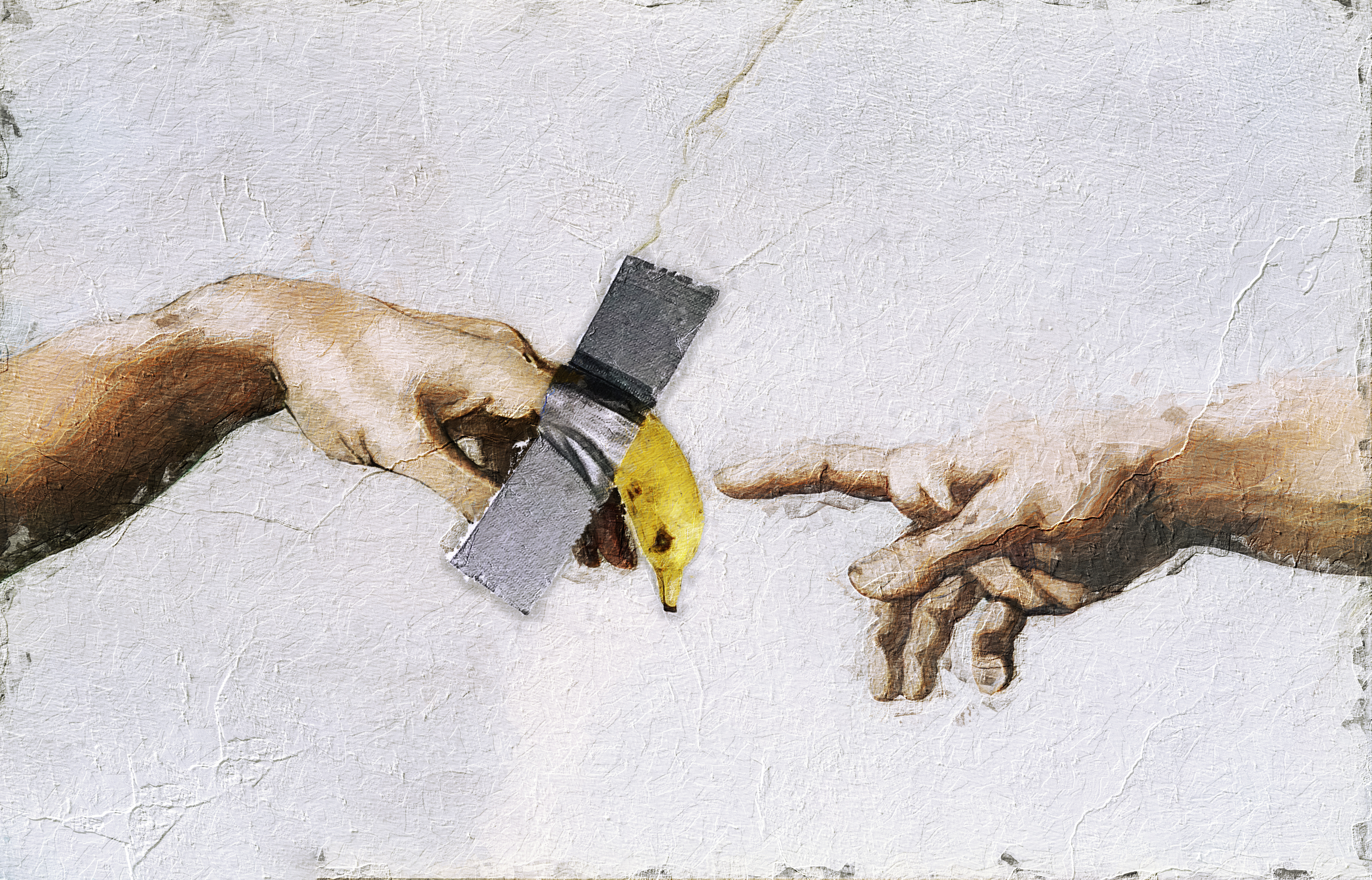
No one likes critique it feels ick, but without it the whole world becomes no rizz.
As someone who tends to lean towards traditional methods, I’ve rarely, if ever, entered an art submission competition. It’s reminiscent of how Prince might have viewed reality TV singing contests – I believe he had a point about the commercialization and industrialization potentially stripping authenticity from artists. The music scene we knew until around the year 2000 feels like a distant era now. Yet, the recent controversy surrounding the duct-taped banana artwork, intertwined with a prestigious art competition, has motivated me to step out of my comfort zone and participate.
In the artwork titled “I’m-Potency,” artist VESA delivers a biting critique of the spiritual decline in Western society. This work draws inspiration from Maurizio Cattelan’s Comedian, as Adam’s outstretched finger is replaced with a soft, taped banana. The wilted banana symbolizes the decay of a culture that once stood for enlightenment but now seems to have descended into absurdity. In Michelangelo’s original sculpture, Adam’s finger was slightly curled, representing humanity’s hesitation and the delicate balance of free will. Here, the reach is further weakened, with Adam’s extended finger transformed into a limp banana pointing downward. It seems as though Western culture, once teeming with creative energy, has succumbed to existential apathy, unwilling or unable to strive for anything beyond itself.
That is just the start of the text ending in this:
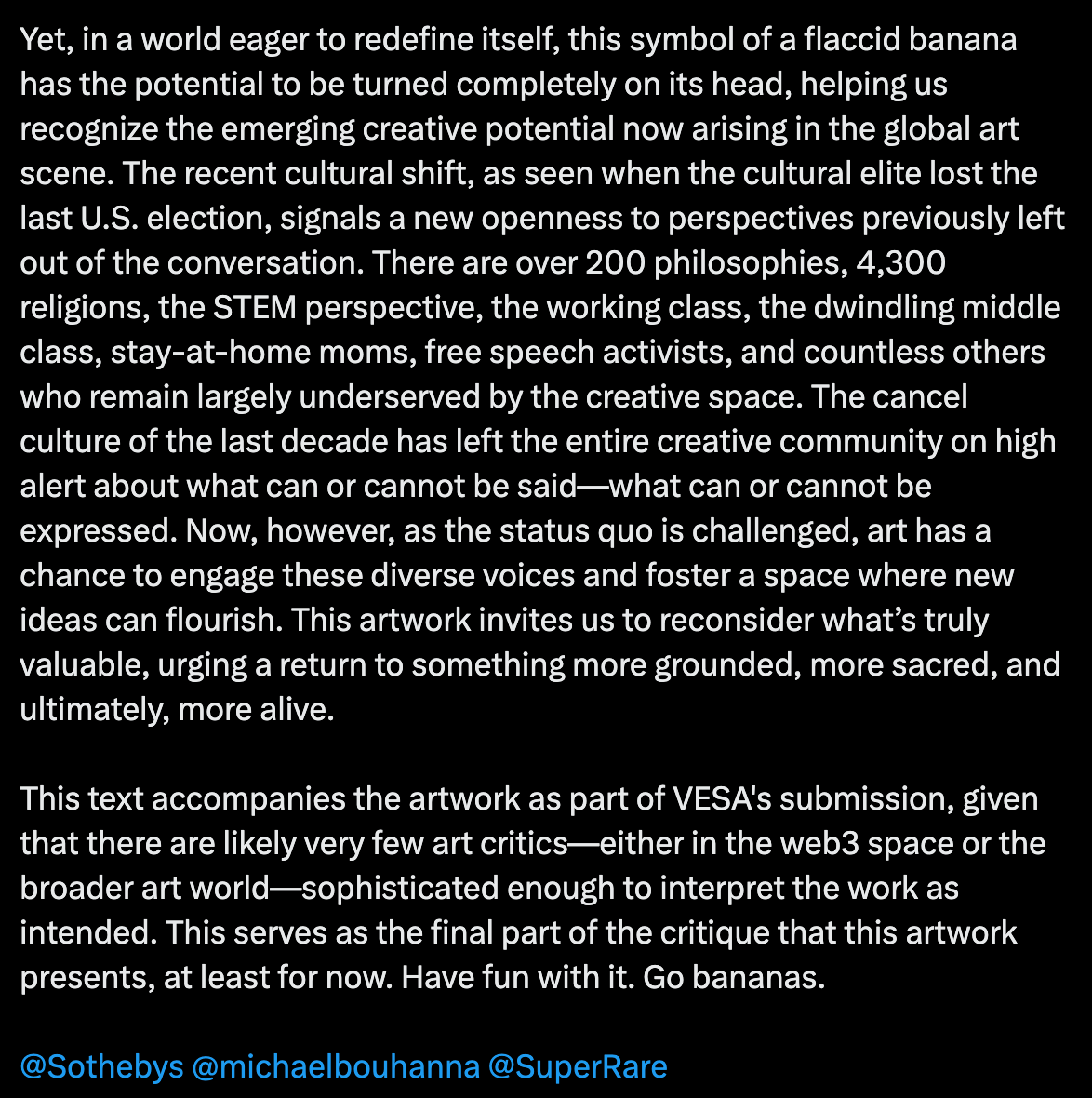 The post tagged the new head of digital assets in Sotheby’s, the auction house, as well as SR.
The post tagged the new head of digital assets in Sotheby’s, the auction house, as well as SR.
Check out the complete explanation of the submission’s content right here.
Indeed, my creative work titled “I’m Potency” didn’t make it to the final round of the SR banana competition. What was surprising, however, was that despite being an established artist advocating for the de-censorship of art in the postmodern era, I found myself censored once more. This time, it was the organizers who were supposed to foster free expression that barred me from the show. Essentially, it seems we are dealing with a false sense of choice – a blend of totalitarian ideologies and the illusion of options at play.
It’s clear that less substantial or visionary works related to censorship were prioritized over mine, which strongly suggests that power plays and non-merit based decisions are happening within the web3 art community, similar to what happens in traditional art circles. I’ll delve deeper into this topic later, but for now, it at least lends credence to my argument that such underhanded tactics are prevalent in the world of web3 art.

In the art world, the war on conservatism began over a century ago with Duchamp’s satire and shock artwork, The Fountain (1917). Duchamp claimed his six-dollar urinal entry piece singled how “art has lost all of its credibility.” Ironically, it sank art even lower from a certain perspective. Fast-forward a hundred years to The Comedian and it seems no amount of bubble gum in the form of “substance” can satiate the post-MTV generations.
In my professional analysis, if substantial advancements were made a hundred years back with much greater impact, then today’s endeavors might be seen as mere role-playing or LARPing, given the diminished standards at play. In this context, the esteemed reputation that Sotheby’s once held seems unjustified, particularly when their digital assets head, Michael Bouhanna, describes “The Comedian” as the most seminal work of the 21st century. The discourse surrounding this topic appears to be more about money, power, and potentially further subversion of societal influence rather than art itself.
From my perspective as an analyst, I find Jonathan Haidt’s research on disgust sensitivity intriguing. He has observed that conservatives tend to exhibit a heightened sensitivity towards violations of boundaries and a greater preference for cleanliness compared to liberals or libertarians. It appears that maintaining boundaries is more critical for conservatives, while it holds less significance for the latter groups.
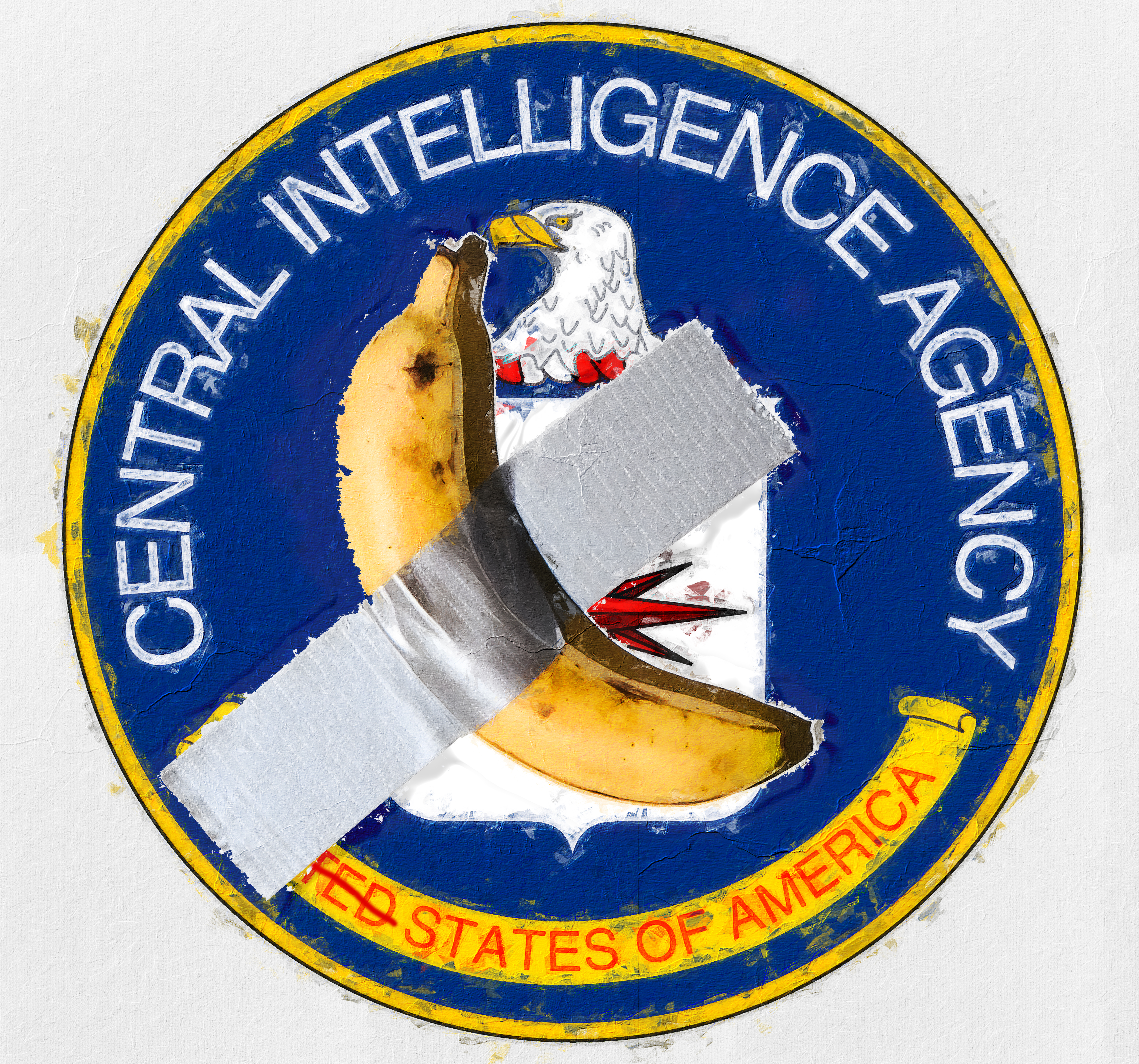
“KISS”
My second inspired banana, which I did not submit to the contest.
Moving on to discussing Jackson Pollock’s era, it’s worth noting that he was favored by the intelligence agencies, with the CIA entering the art world as early as the 1940s to counteract the growing influence of communism. Artists leaning towards the left were promoted to emphasize American superiority. It was easier to sell the idea of a drink laced with cocaine and encouraging individual freedom to American youth and elites than it was to extol the virtues of Soviet dictators who required both labor and divine status.
Read the full context of the “Kiss” artwork
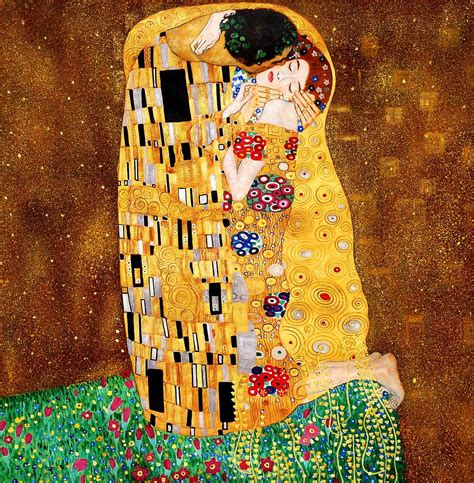
It’s well-known that Gustav Klimt’s Kiss is a renowned piece, and the idea of merging the CIA logo with the ‘idiot banana’ in this context can certainly provoke a laugh, if not raise an intriguing question about the interpretation of art over the past 80 years.
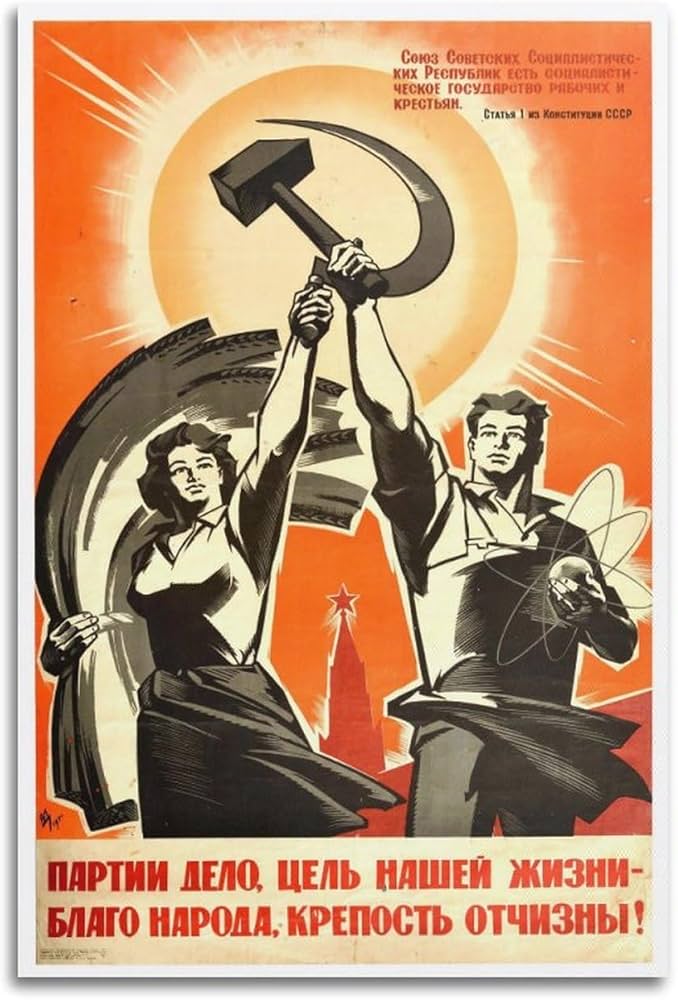
This isn’t conspiracy theory—it’s conspiracy fact. It’s also worth noting that the term “conspiracy theorist” was invented by the CIA as a derogatory label to discredit those questioning their activities, a tactic that gained traction after the JFK assassination. This will be relevant later when discussing how RFK has now been elected as part of the new U.S. cabinet. Conspiracy theories have been around pre-internet, took the internet by storm, and are completely invisible to the art world. This is because there is no right wing thought in the space what so ever. Sure there is cooky thing from flat earth to what ever, but there are legitimate conspiracies proven true that are fascinating. There are no gallery artworks making any waves? Not a single openly conservative artist anyone knows? Seems natural.
In simpler terms, you might recognize Yuri Bezmenov, the ex-KGB agent, known for his interviews where he explained that demoralization was an essential part of their strategy to undermine the U.S. government. To me, this demoralization has intensified since the 1980s, driven by postmodern beliefs and the war on conservative values and spirituality, symbolized by ‘God’ or any concept of a natural order not fabricated for manipulation. Bezmenov’s term “useful idiot” provides an alternative perspective on various figures in the arts.
Eric Weinstein hints at possible explanations through his Kayfabe idea, suggesting potential reasons for our current state. Here are parts 2 and 3.
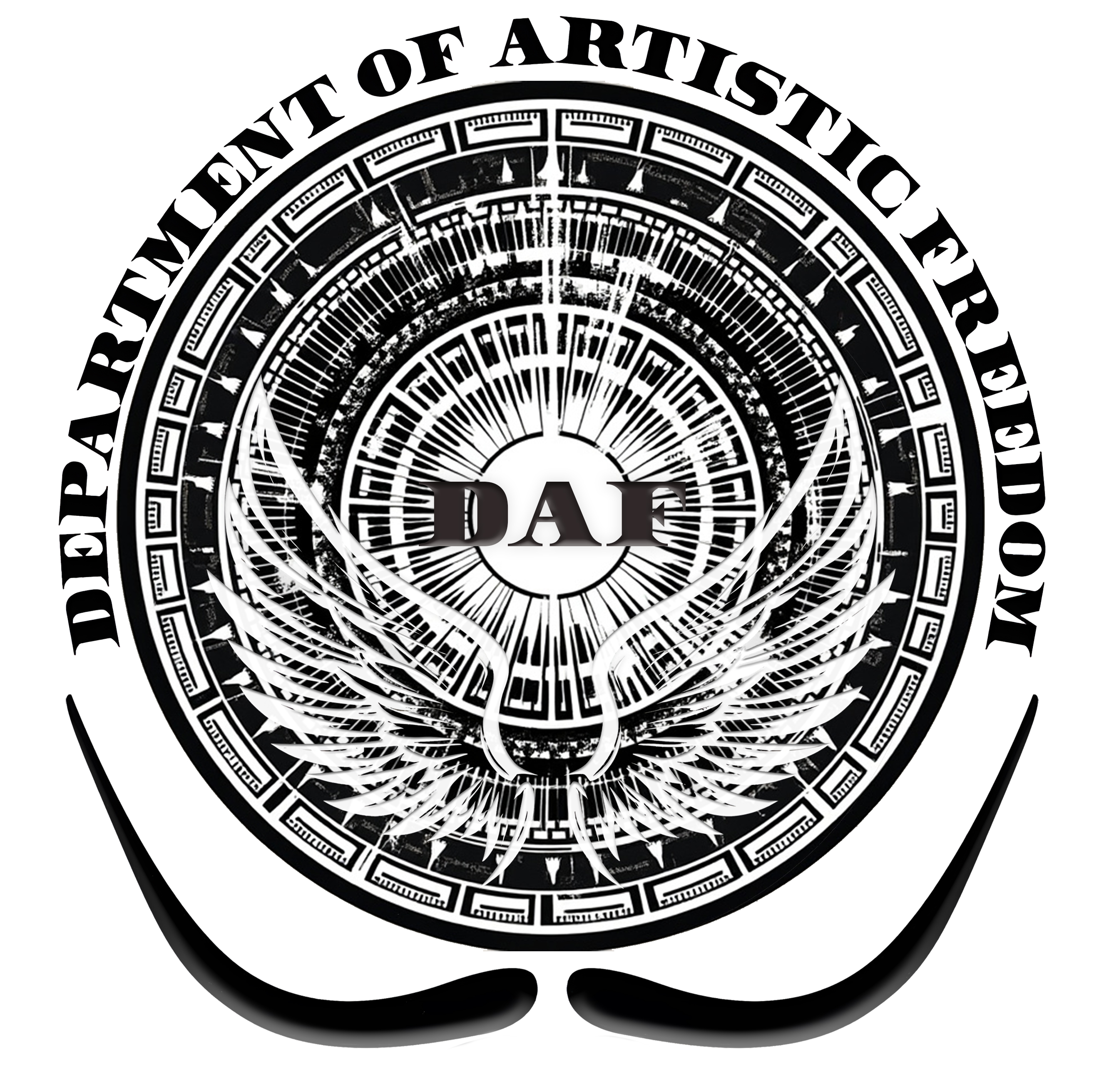
Home of DAF
The art world, which has been playing with our collective subconscious for a 100 years, is in deep need of an audit by a character like Elon Musk with his DOGE crew of Vivek, RFK and Trump. Wouldn’t that be something?
As a fellow crypto enthusiast, I strongly recommend you tune in to Rogan’s three-hour discussion about this topic. My motivation for establishing the Department of Artistic Freedom was to extend an open invitation to the first 100 pioneers who resonate with this concept, which is currently up for grabs on Ador for 369,000 satoshis – a tribute to Tesla. If you feel inclined to support this cause financially, go ahead, but I’m mainly concerned with the spread of this mindset. You don’t need to join this initiative to start shaping the future in your unique way. Simply embark on your own journey without constantly self-censoring and let your creativity guide you.
The organization aims to serve as a creative hub for artists with a focus on liberty, initially providing support to talented individuals who have been overlooked due to their inherent worth and value, yet face unwarranted cancellations or marginalization for questionable reasons.
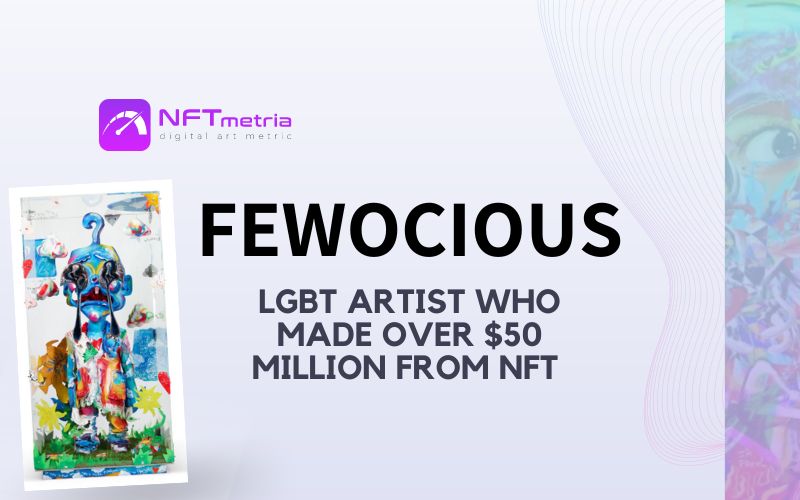
Considering the significant promotion by governments, media, and advocates for the LGBT+ community recently, is it possible that this movement was merely a covert operation like the one surrounding Jackson Pollock’s art, back in his time? Let your imagination soar unbounded by any constraints of physical reality. At the same time, those who speak up will face cancellation, while many will be persuaded to remain silent.
I’m not implying it was definitely the case, but given what we now understand, it’s uncertain. The individuals involved may be unaware of this situation, with Fewocious being no exception. Let me clarify that I am not accusing Fewo, SupeRare, or Sotheby’s of anything. This discussion revolves around something larger and the collective implications.
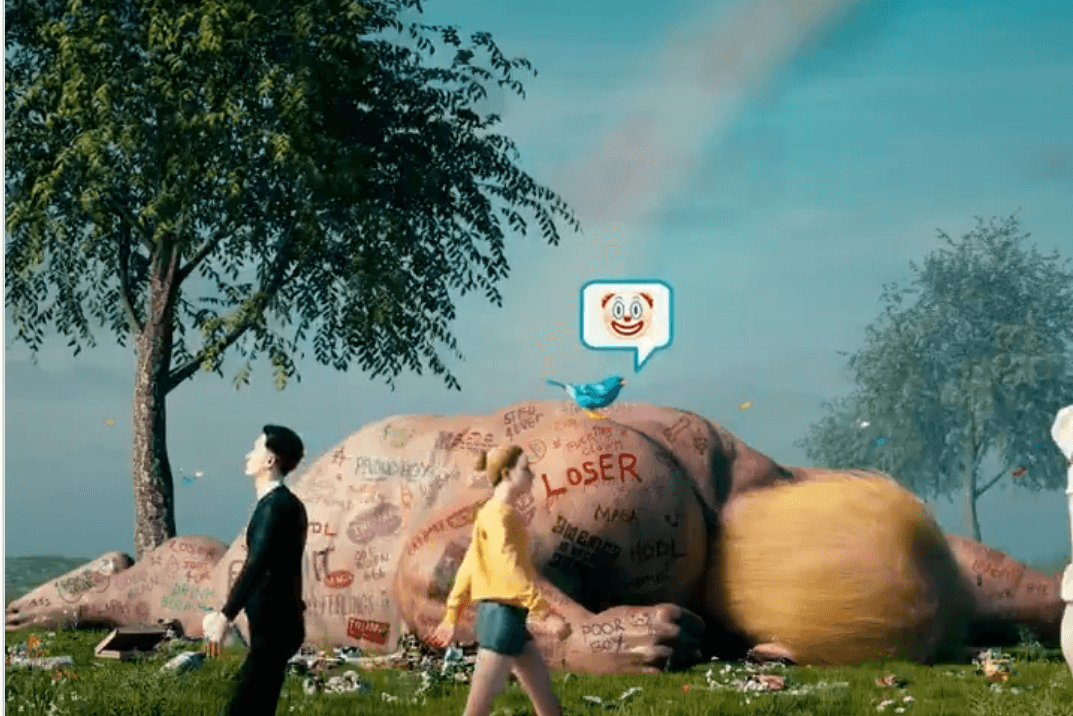 Beeple’s “Cross Road” sold for 6.6M at Sothebys earlier
Beeple’s “Cross Road” sold for 6.6M at Sothebys earlier

$17 Million Realized in Sotheby’s First NFT Sale with Digital Creator Pak
As a crypto enthusiast, I can’t help but wonder if my journey mirrors that of artists like Pak, Beeple, and others who use contemporary, postmodernist language. Their work seems perfectly aligned with the ethos of late-stage postmodernism, especially in the realm of NFTs.
Based on the Twitter files, it’s clear that managing messages by either reducing their visibility or increasing it was a common practice. Merit didn’t seem to play a significant role in the decision-making process. Instead, the question appeared to be: “What can we disseminate without raising suspicion?” This method aligned perfectly with the degenerate agenda. As culture critic Camille Paglia has argued, it’s challenging to market sophisticated art to an audience that doesn’t appreciate it.
As a researcher exploring the realm of art, I’ve been pondering over some intriguing thoughts that might stir up debates. It’s important to clarify that I’m not casting any aspersions on artists, galleries, or auction houses. Instead, I’m expressing my personal views about the shifting tides in art philosophy and the gradual dilution of substance in contemporary artworks.
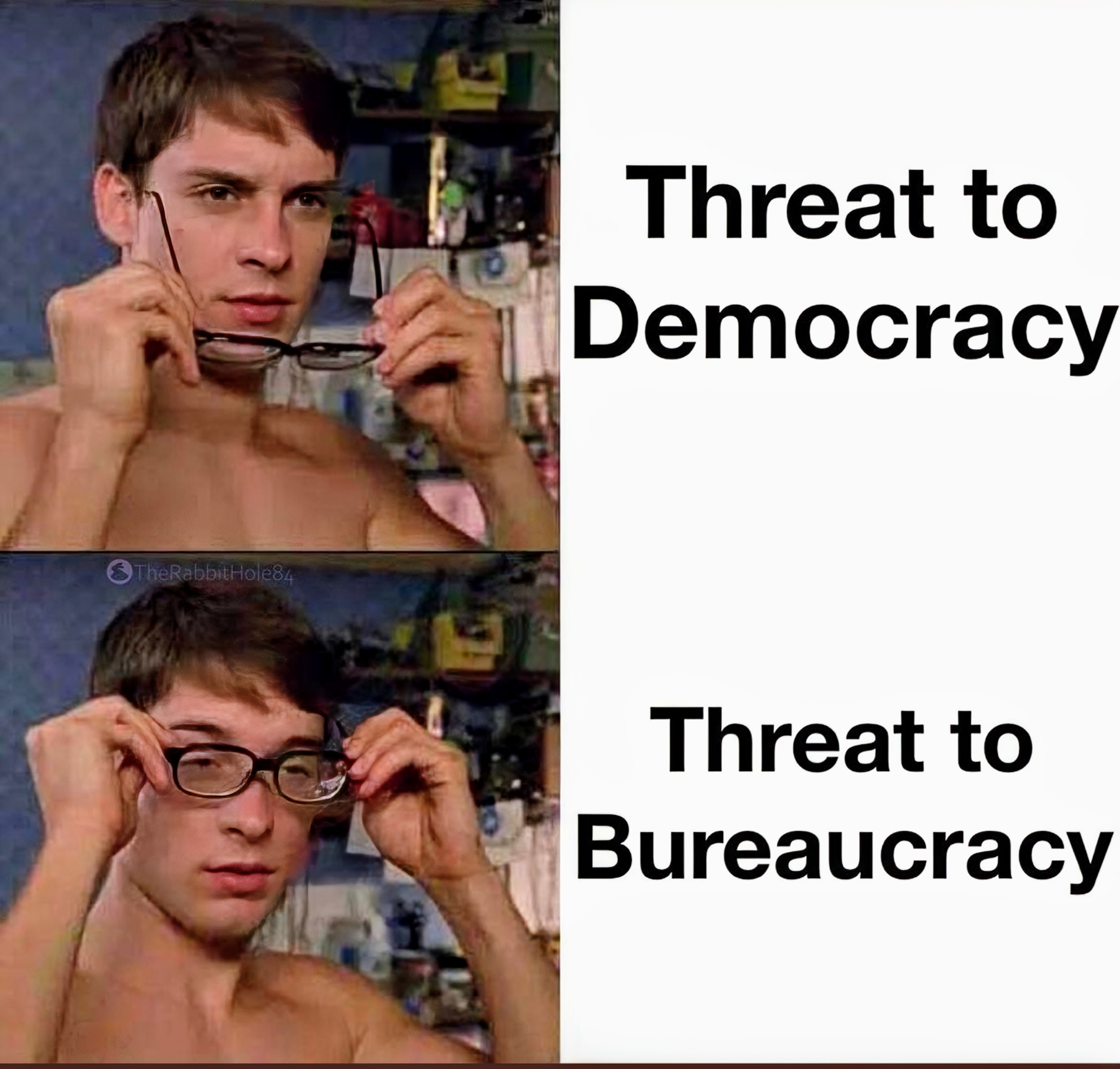
Moreover, it’s important to clarify that this discussion isn’t about harboring prejudice towards any group within postmodernism. Instead, it’s focused on those individuals who wield power and control behind the scenes, using strategies to advance or suppress ideas based on power struggles and political agendas. People such as James Lindsay have dedicated substantial portions of their lives to unraveling this complex dynamic.
People might assume I’m envious of others’ prosperity, but if money were my primary concern, I wouldn’t have dedicated the last seven years to preserving art from postmodernism publicly. Instead, we seem to be moving backwards while progressing, and the world, in a manner of speaking, is operating in reverse.
I feel genuinely pleased whenever an artist thrives. It’s rare for artists to gain significant success, as massive stardom often necessitates aligning with various agendas rather than solely relying on the power of their art to reach unprecedented heights. However, we can’t change this situation unless it’s brought up for discussion.
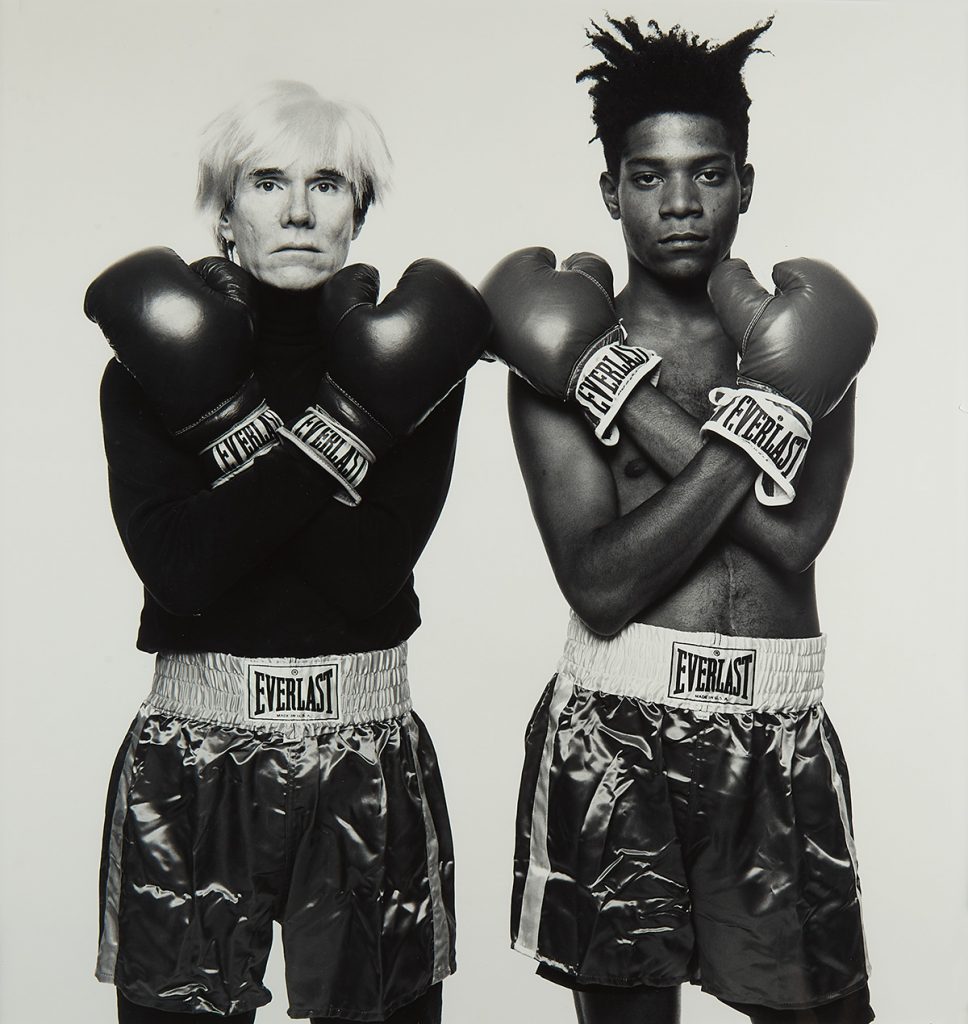
Reflecting on the current state of the crypto market, I can’t help but ponder how my perspective has shifted. Before, certain events or trends seemed obscure or irrelevant. Now, I see them in a new light, understanding their potential impact on the market dynamics. Similarly, as I navigate through the present landscape, I find myself constantly questioning and analyzing every move, trying to decipher hidden patterns and predict future developments.
Additionally, I’d like to share some other valuable pieces that caught my interest. Some weren’t entered into the contest, because, quite reasonably, people with self-respect prefer not to have their work assessed by jesters. The quality of selection has been a source of growing discontent since the beginning, and it seems my initial concerns were validated. Initially, I expressed my views about this matter, and I’ve been pouring as much criticism as I can onto the system to see if I was right – and indeed, it proved to be so.

Norman Harman is one of the most interesting voices in web3. To me, the consumerist era has been gone for 20 years already, but his critique of the bureaucratic class with his new series, as well as an avalanche of dirty little bitch slaps to the auction champagne crew, has been a breath of fresh air in the scene. The new AI motion work is dope too. Both capture perfectly the orgiastic degeneracy scene of this auction vibe. Norman, like many other OGs, wouldn’t “submit” work to a contest like this anymore, having been disillusioned from the scene already many times over.
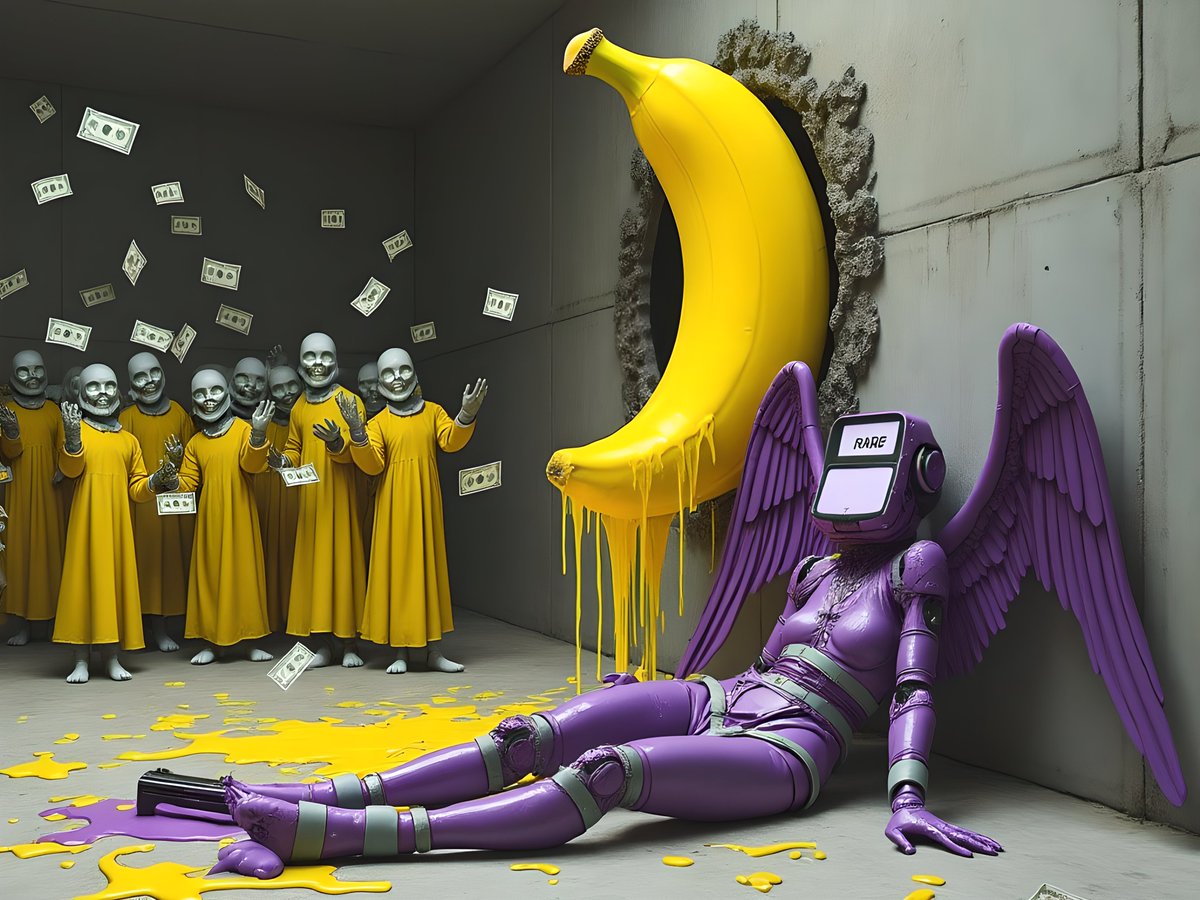
In this artwork, titled “Spaced Painter,” she symbolically yields to the dominance of the banana, a metaphor for feelings of insignificance and exclusion. This work makes her unique or “Rare.” The piece is forward-thinking, as the artist’s rejection from the top ten selections served as inspiration. It poignantly depicts the impact of 100 years of postmodernism on individuals with a spiritual or common sense outlook, and it seems prophetic that such art can be created in advance about this trend.
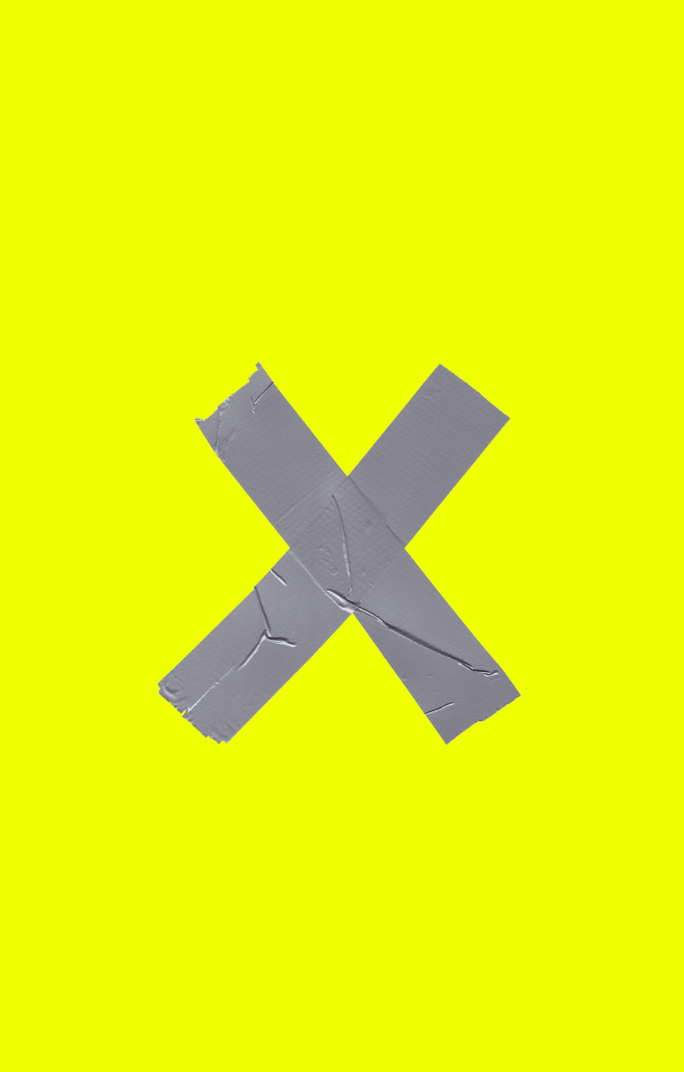
As an analyst, I find that Robness’s work “I Am Banana,” minted on Superrare in 2021, is a playful parody of Kevin Abosch’s project “I Am a Coin” from 2019. To put it simply, the essence of the original piece was recreated by stacking tapes and waiting for yellow paint to dry, symbolically lowering the bar in comparison. That’s my take on it.
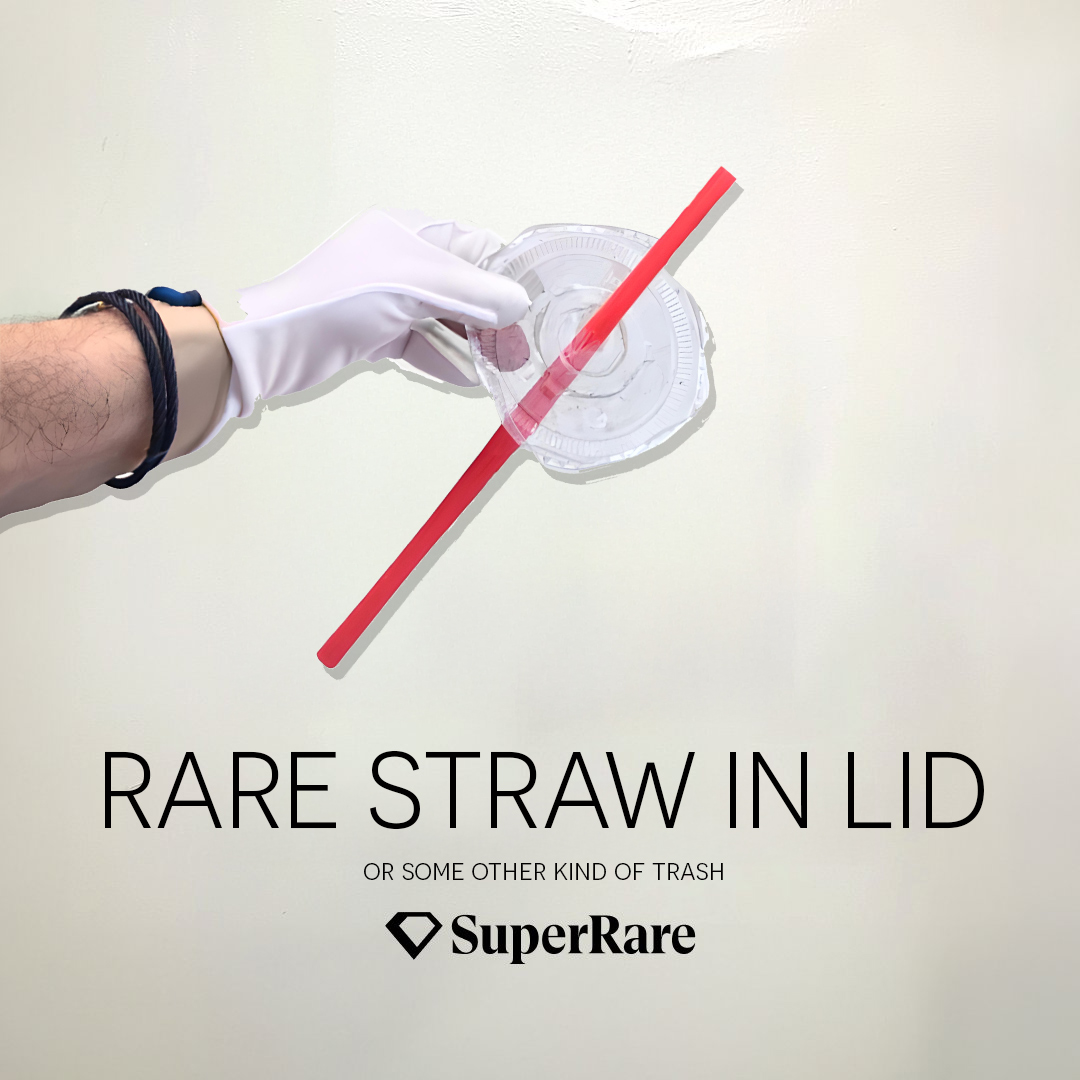

We chatted extensively with my friend Nicolaas about Bitcoin LIVE, and other related topics, but I wasn’t familiar with the chosen bananas at that time. The following day, any remaining optimism I had for early-stage platforms vanished, which prompted me to write this article.
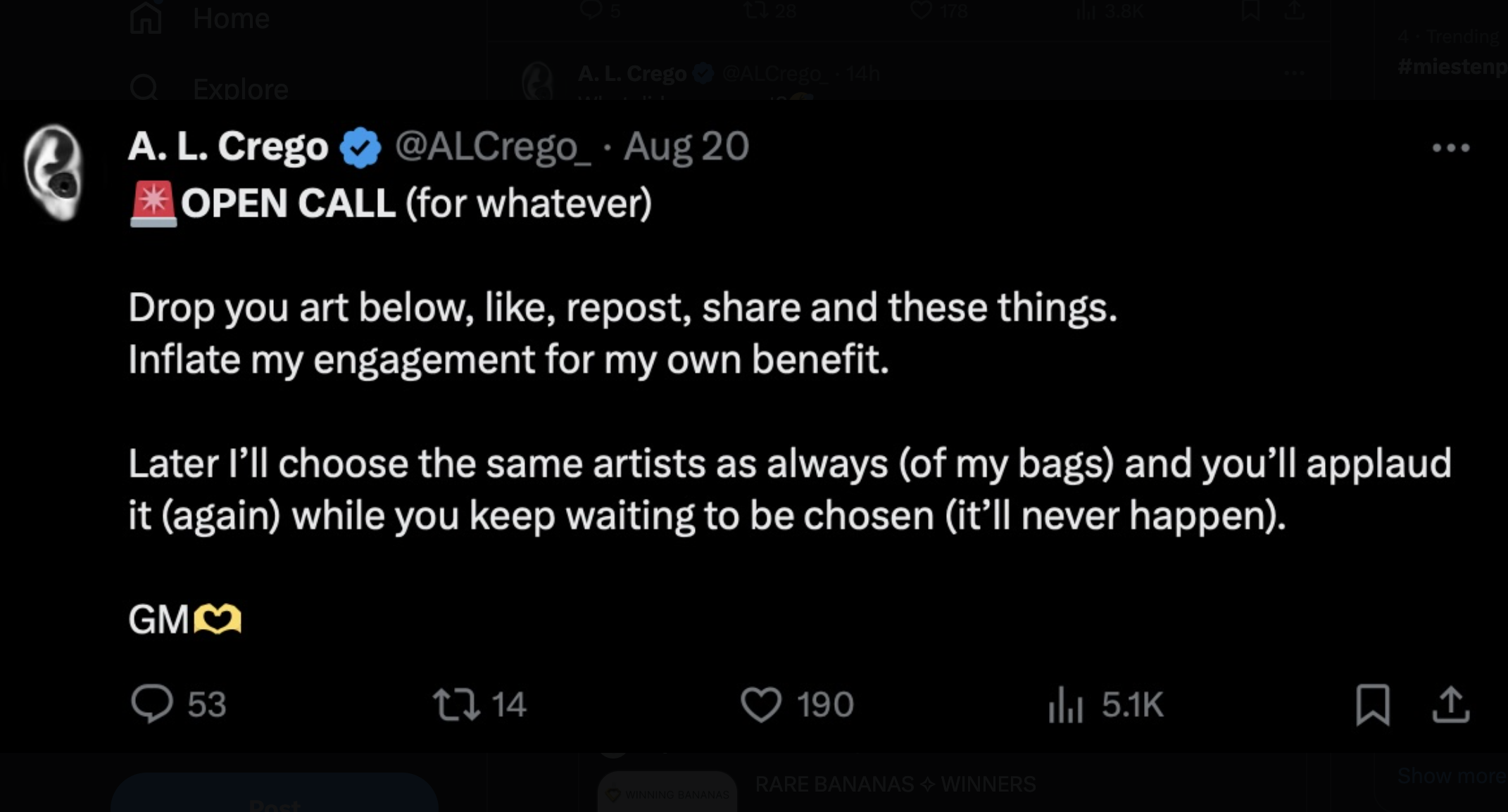
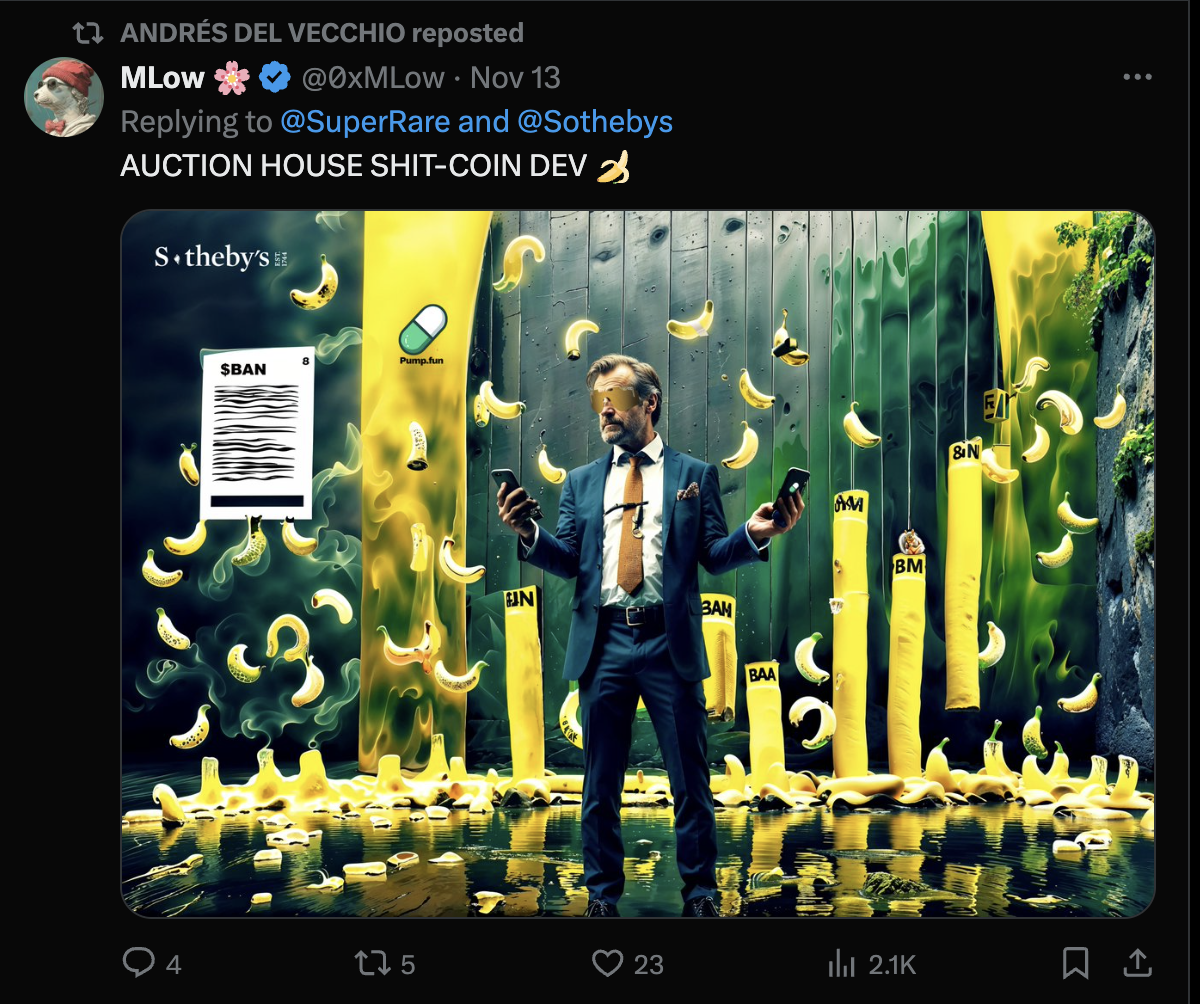
Andres Del Vecchio, an exceptional artist, carefully chose a superior array of bananas from the waste on his X, offering this collection for your appraisal. This could save you time if you can’t sift through the 1100 submissions yourself.
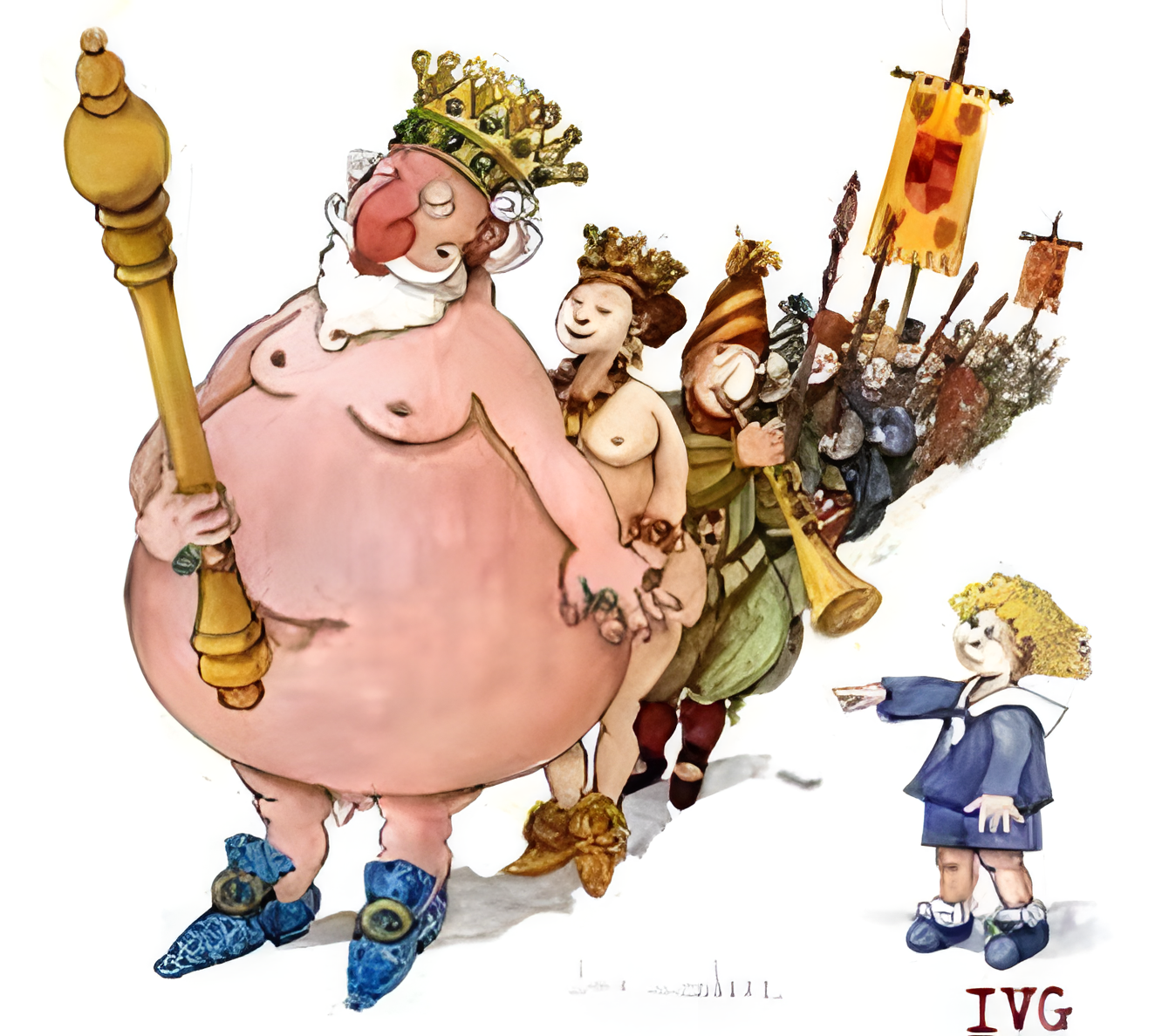
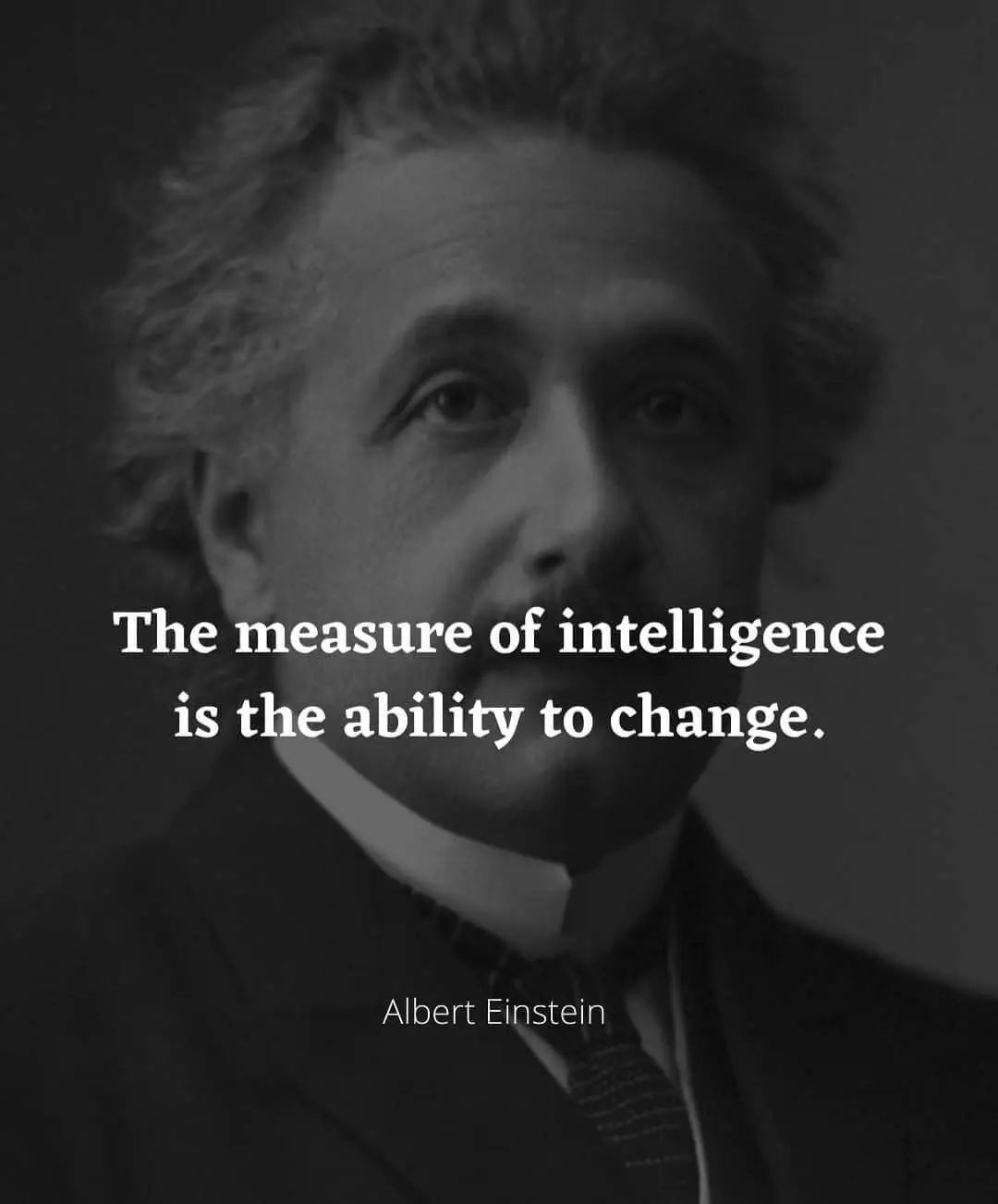
The measure of intelligence is the ability to change. – Albert Einstein
While an Einstein quote is a tough one to do without seeming pretentious, in the above context it works. If you work with truth, even the setbacks help you rise. We need to stop focusing on the fall. Artists are creators, and we are currently being completely under served by trying to be under the thumb of the destroyers. This is all the postmodernists can do, and by doing garbage bananas, you are submitting to being reduced further and further. Start building the future. Make your own gallery. Band together. Don’t submit to the bureaucrats that run the establishment. We are artists. We are powerful. it’s cool. Old things and people die. Let them.
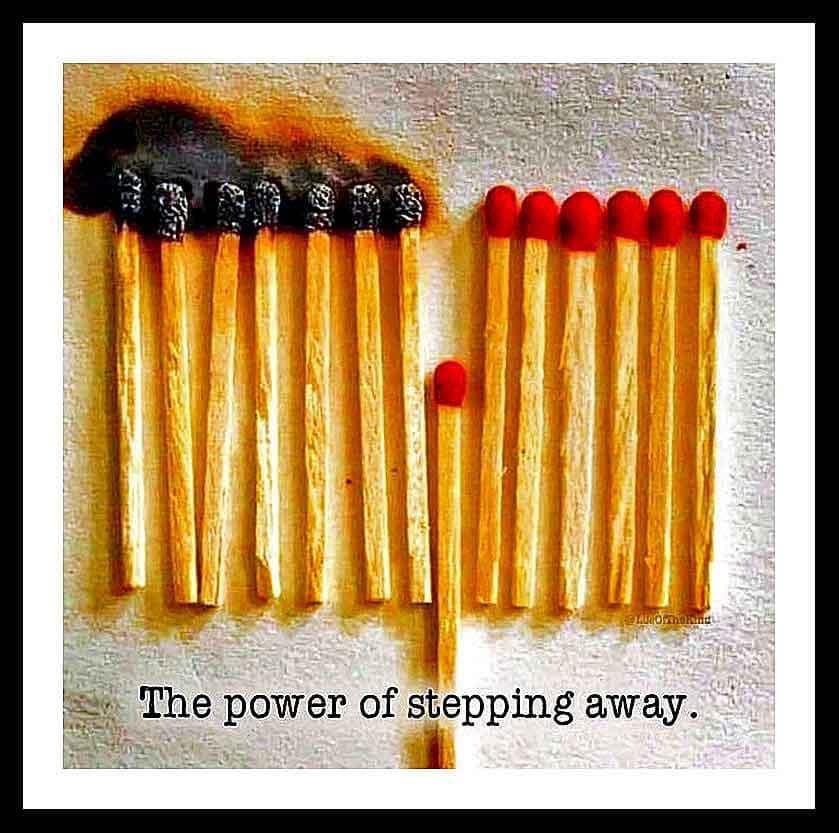
It seems like quite a chaotic situation, doesn’t it? Just to clarify, I had been working on several projects, including these and those, while also delivering talks on large platforms. However, despite everything selling out elsewhere, nothing was moving here for me.
Despite it all, find gratitude. It’s a lifeline. There is plenty to be grateful for, but step out of harms way. Remember why you got into this in the first place.
If you’d like to assist me, you might want to gather these items from my Stockroom page. They should hold up well over time. I don’t mind returning the platform fee to Stockroom since even with poor sales, they provided me with comfort tokens when SUPR was introduced, acknowledging that I was an early participant. There was still some respect shown back then.
Recently, I’ve found myself questioning if my art, despite my best efforts, has been intentionally stifled in the market. It’s possible it wasn’t them, but it’s a mystery. Regrettably, I’ve invested quite a bit in minting my art there and hope one day it will be recognized within this community. This article took me a week to write and research, unpaid labor. Some may view me as courageous or principled, while others might think I’m foolish. It’s often hard to tell the difference. Perhaps, I’m a blend of both.

I’m potency
The NFT includes a physical canvas print, painted on top with acrylics, and it launches an AR animation.
Available for 3 ETH

Kiss
This NFT comes with a real-life canvas painting made using acrylics, and it also triggers an augmented reality (AR) animation. It can be purchased for 3 Etherium coins (ETH).
Stay cool,
VESA
Crypto Artist, Speaker, Consultant, Writer
All links to physical, NFTs, and more below
http://linktr.ee/ArtByVesa
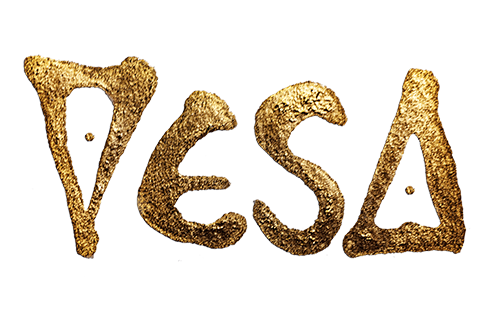
Read More
- DBD July 2025 roadmap – The Walking Dead rumors, PTB for new Survivors, big QoL updates, skins and more
- Here Are All of Taylor Swift’s Albums in Order of Release Date (2025 Update)
- Delta Force Redeem Codes (January 2025)
- PUBG Mobile Sniper Tier List (2025): All Sniper Rifles, Ranked
- [Guild War V32] Cultivation: Mortal to Immortal Codes (June 2025)
- Stellar Blade New Update 1.012 on PS5 and PC Adds a Free Gift to All Gamers; Makes Hard Mode Easier to Access
- COD Mobile Sniper Tier List Season 4 (2025): The Meta Sniper And Marksman Rifles To Use This Season
- Aaron Taylor-Johnson Debuts New Look at 28 Years Later London Photocall
- How to Update PUBG Mobile on Android, iOS and PC
- Best Heavy Tanks in World of Tanks Blitz (2025)
2024-11-23 13:01